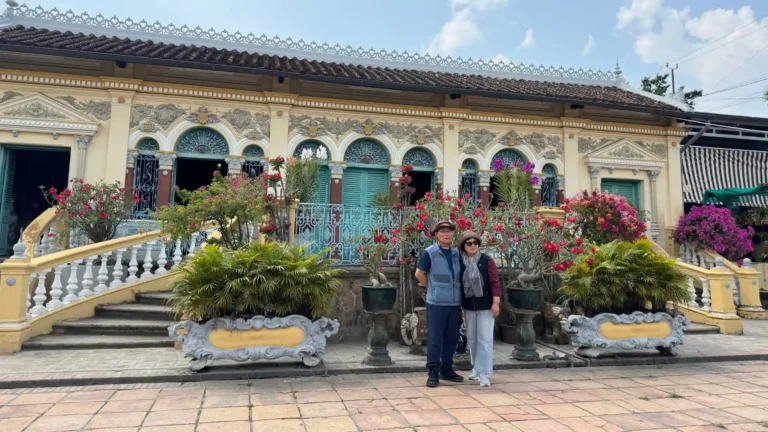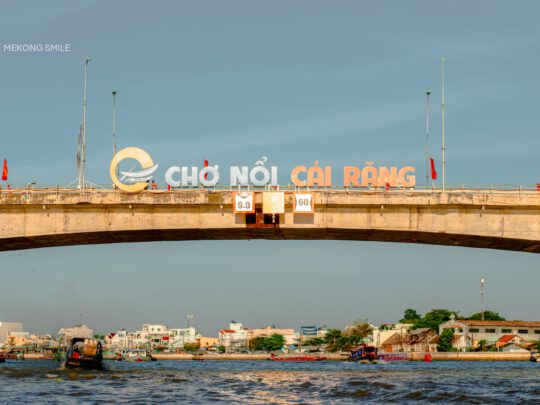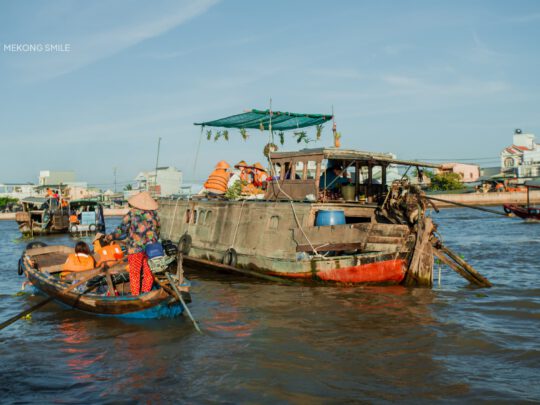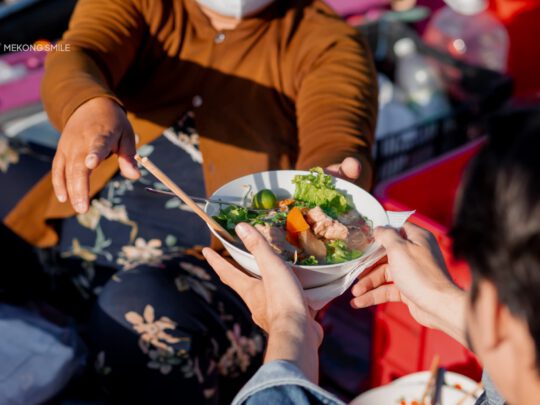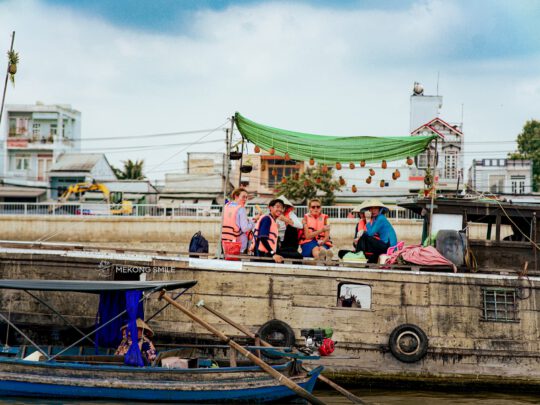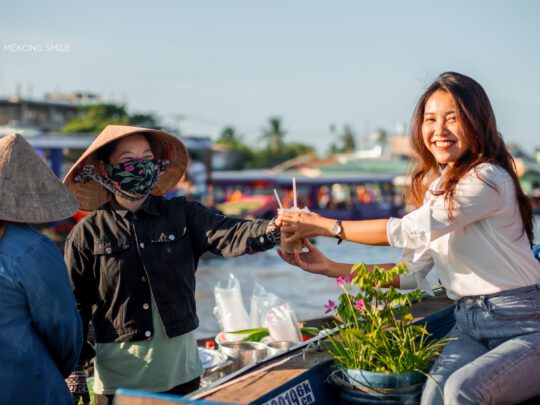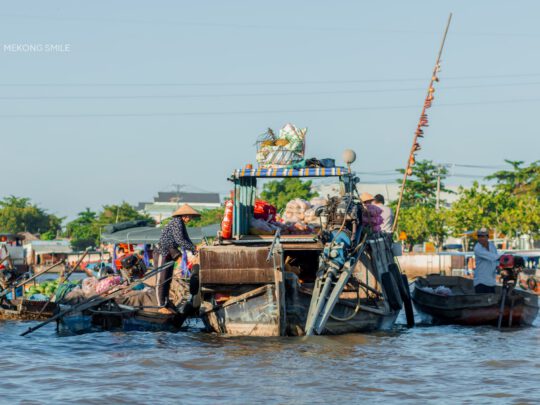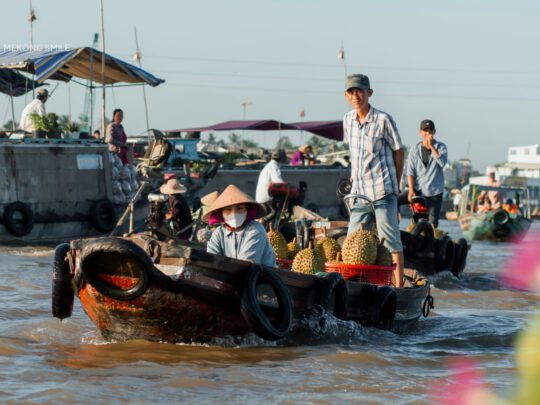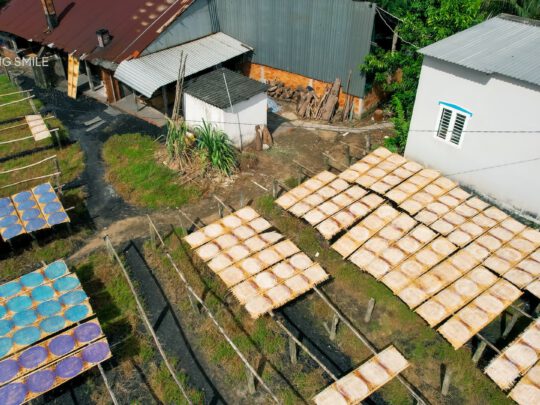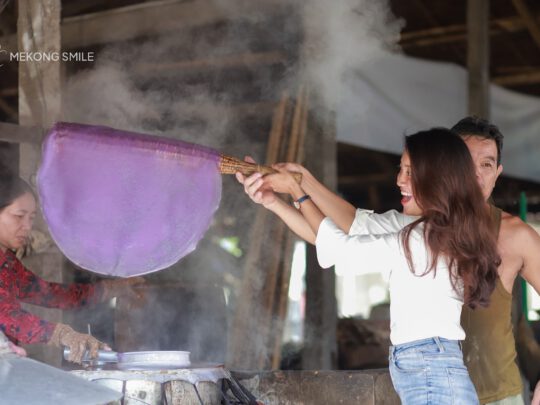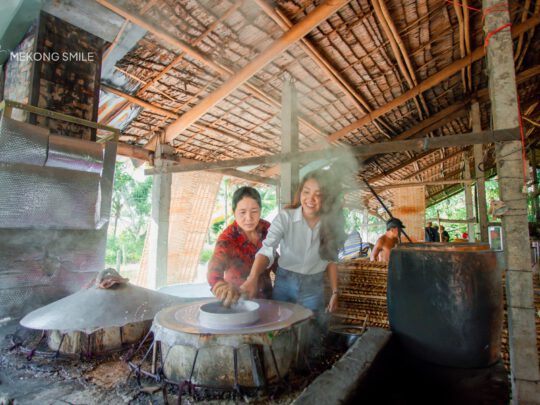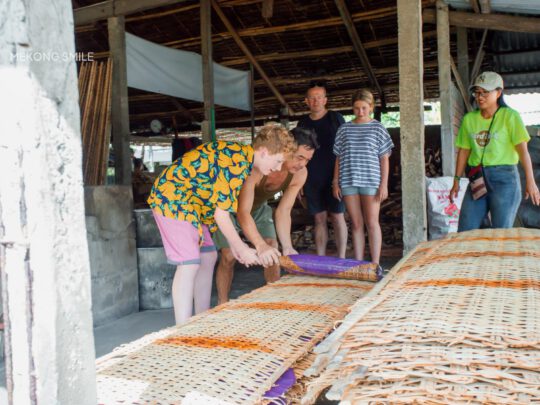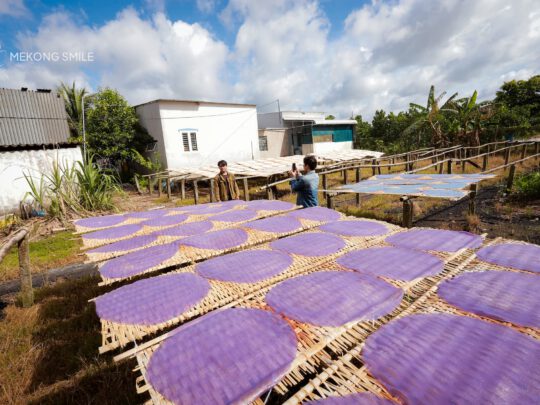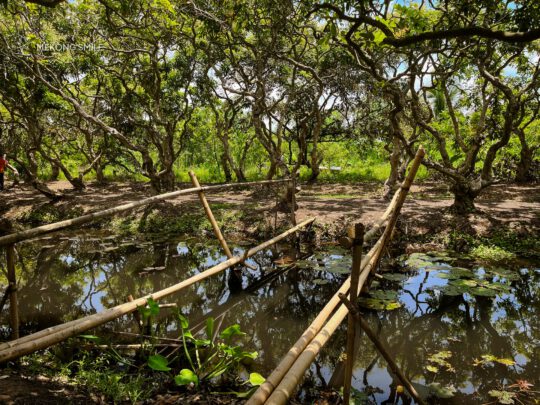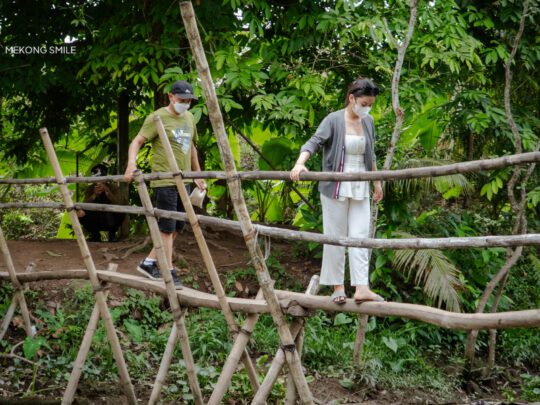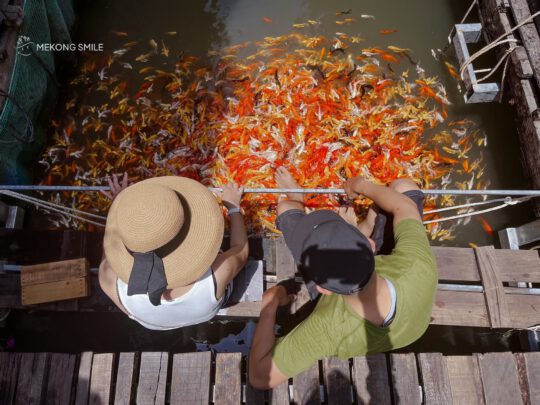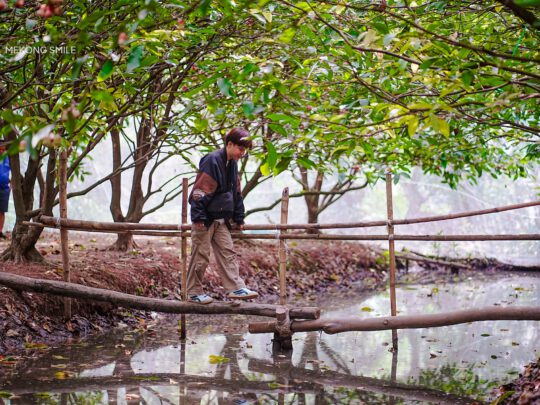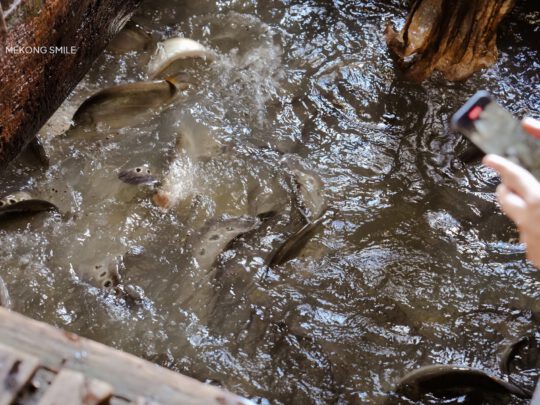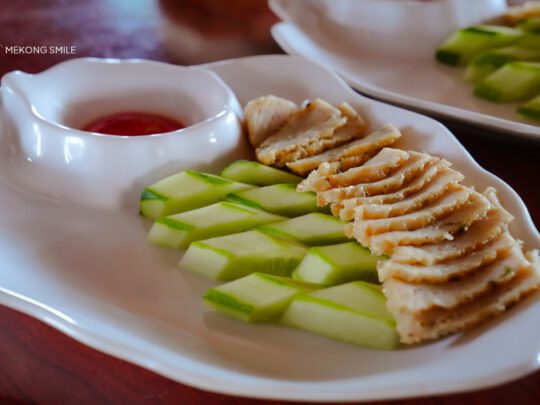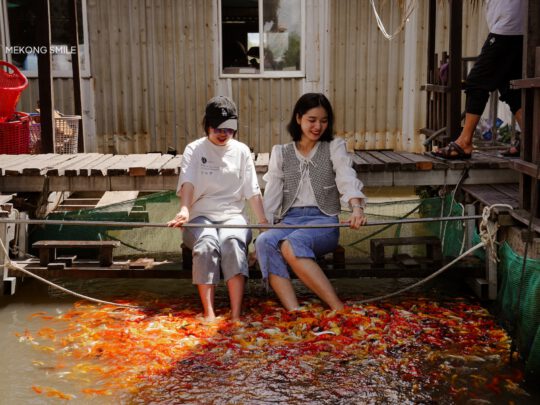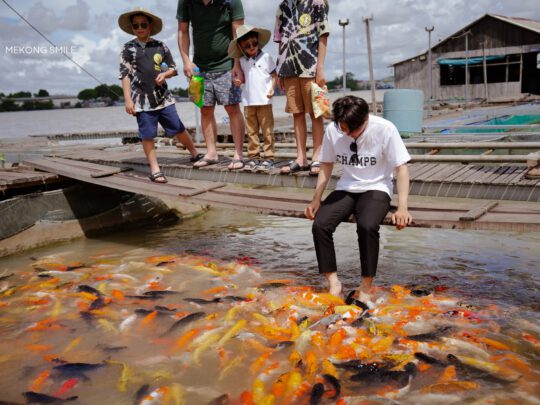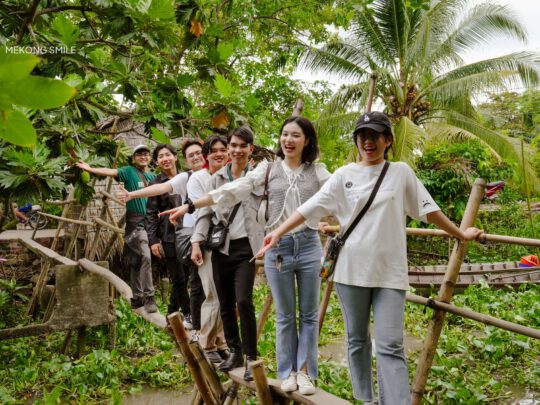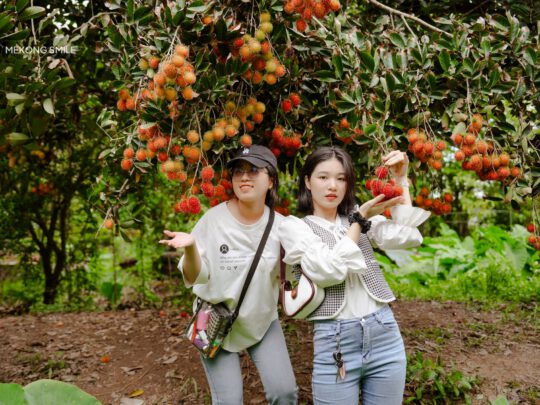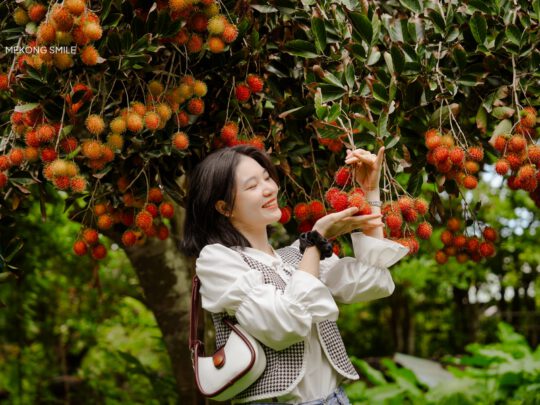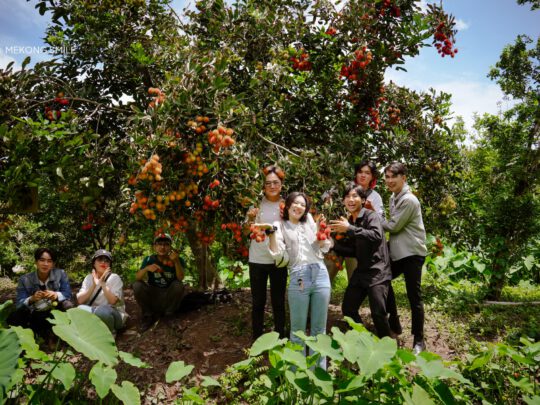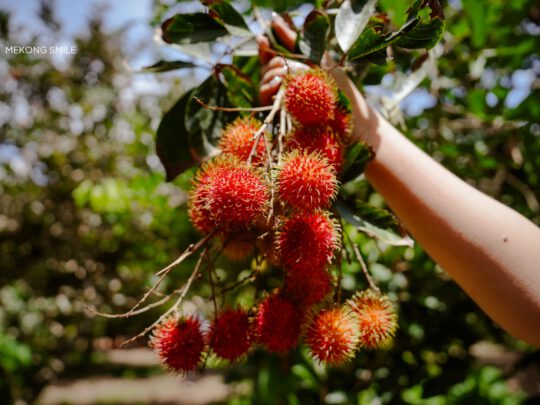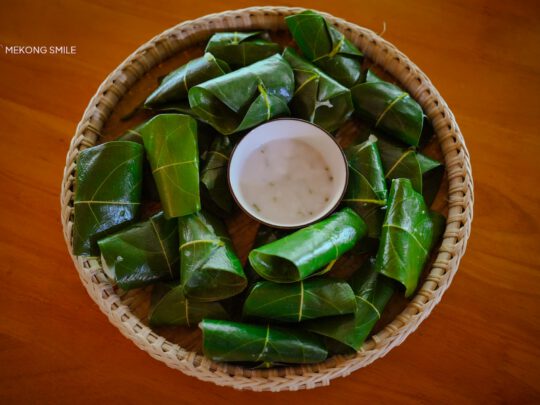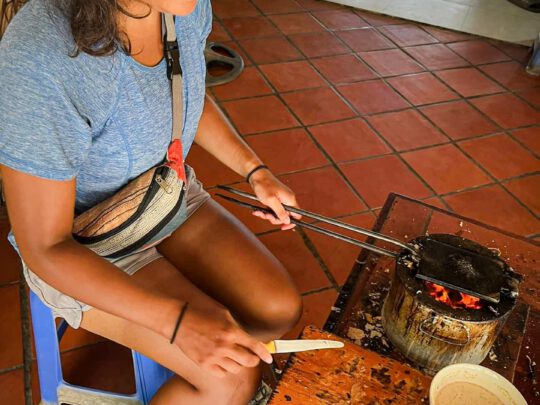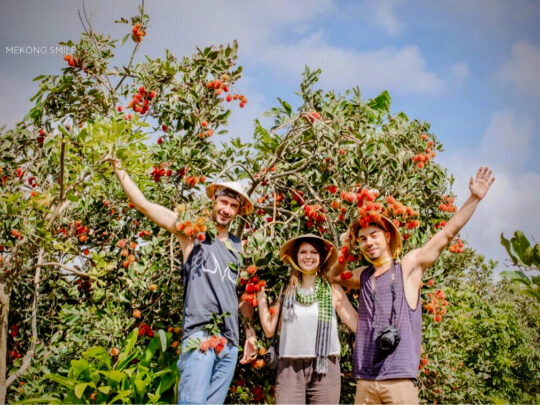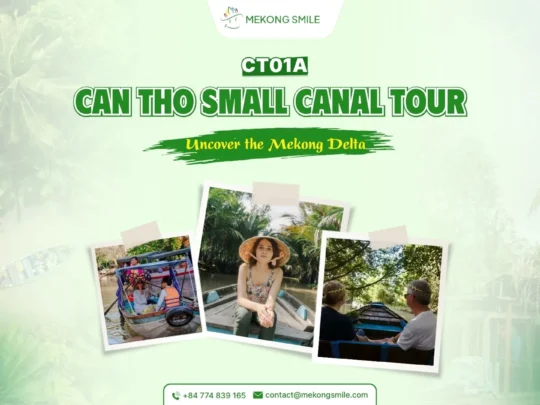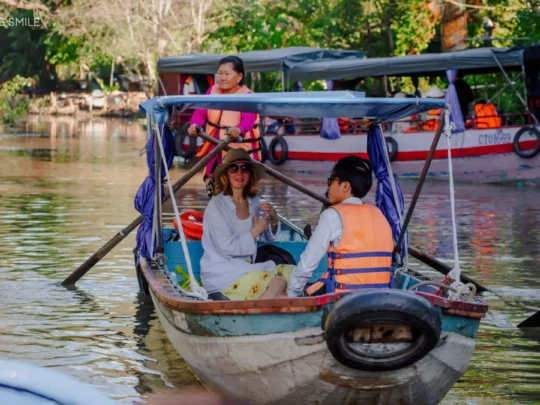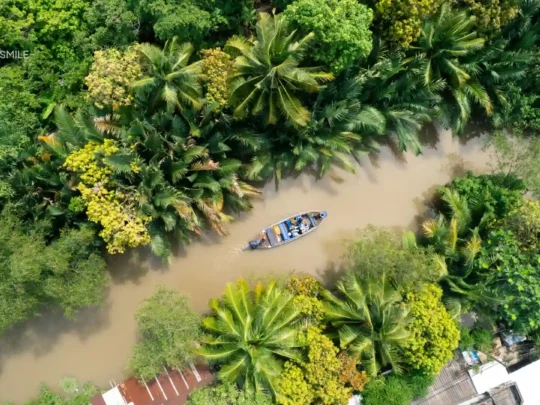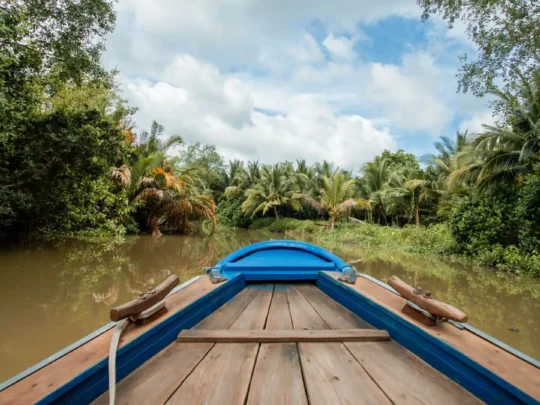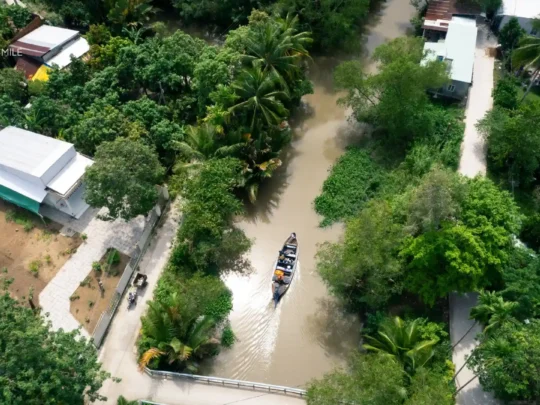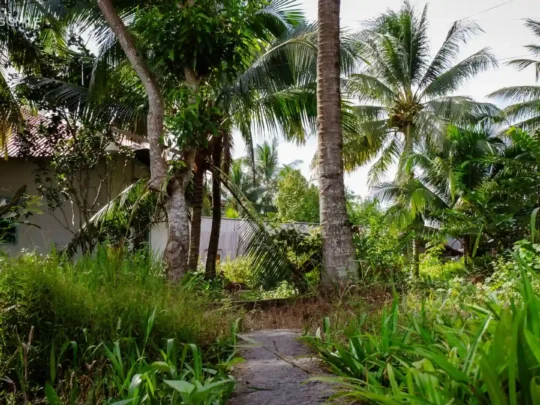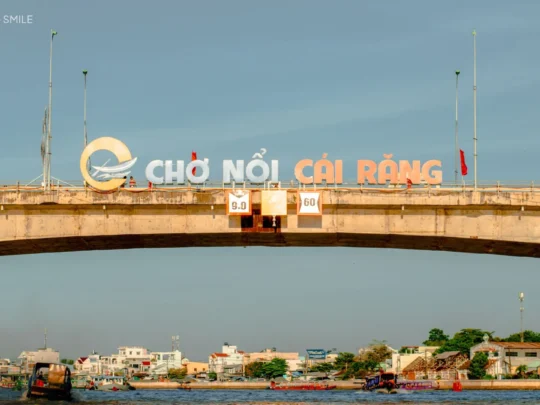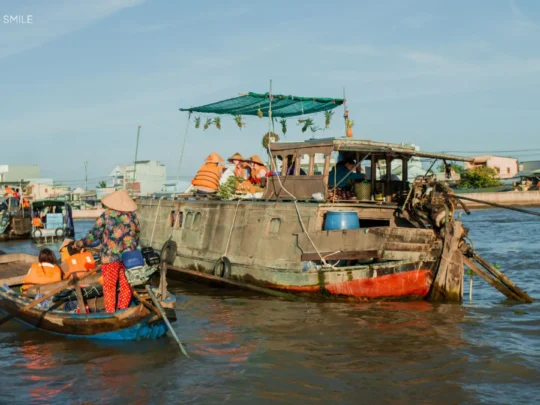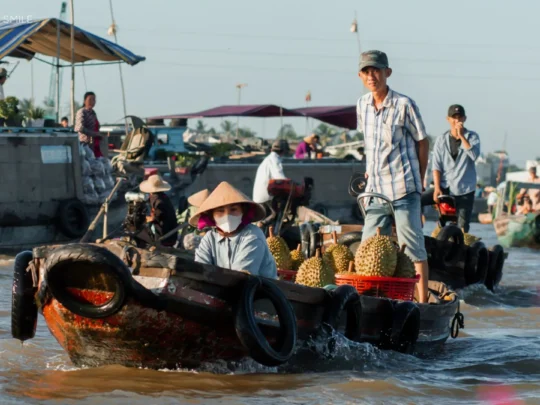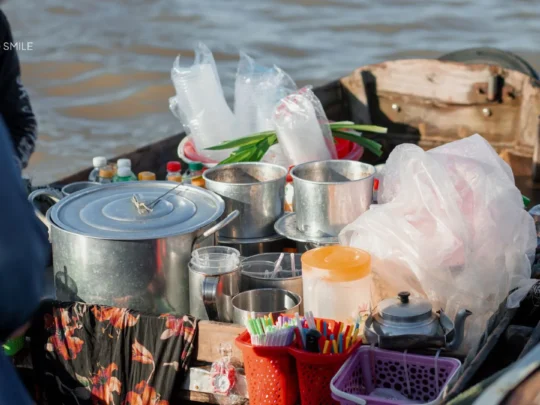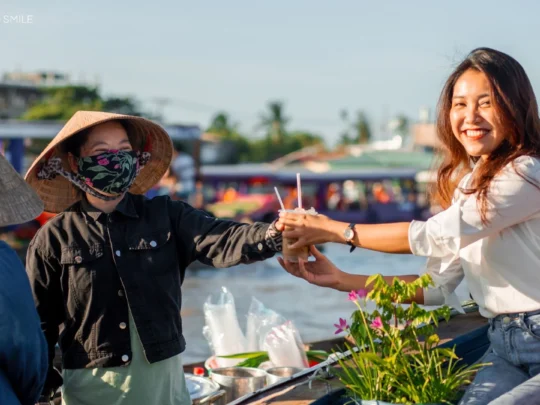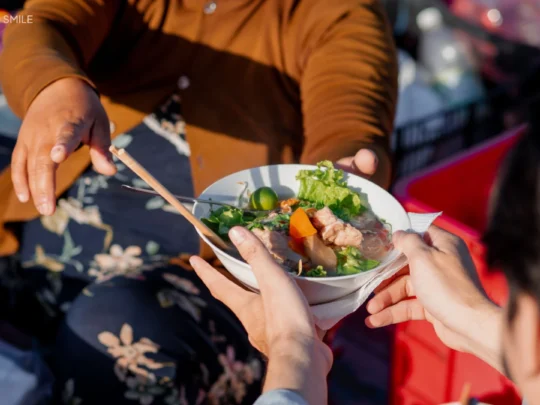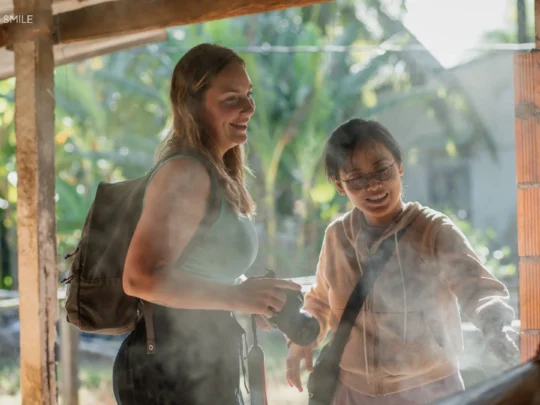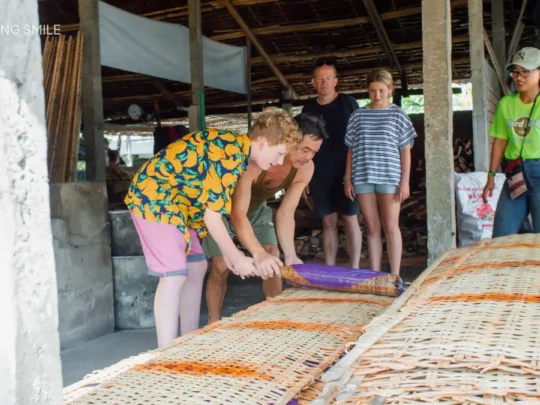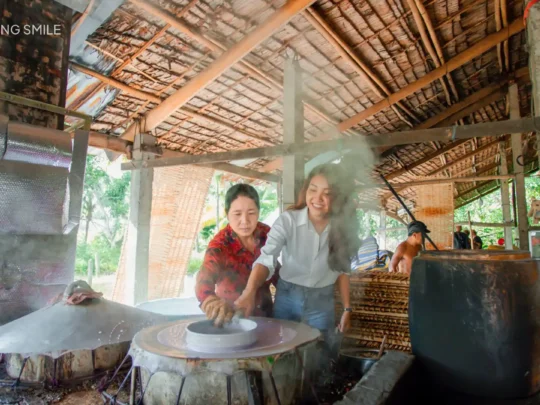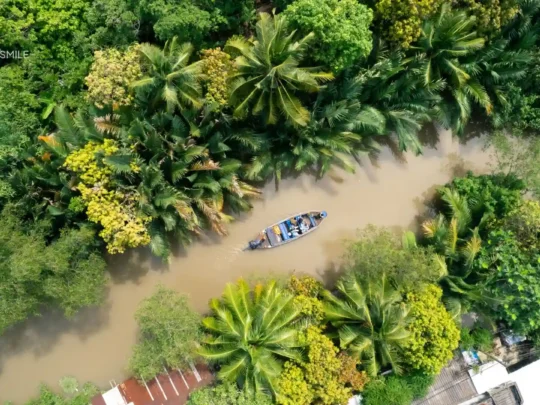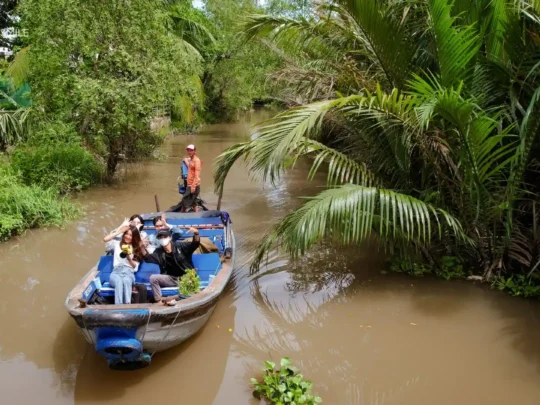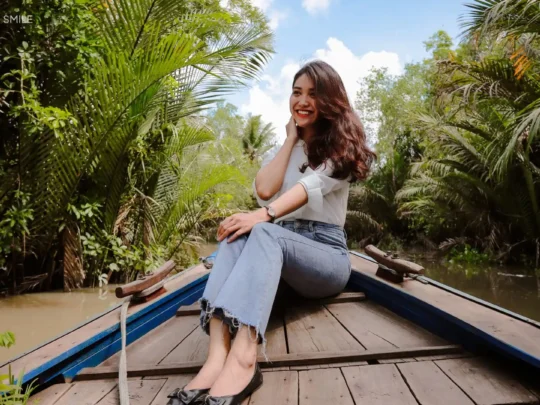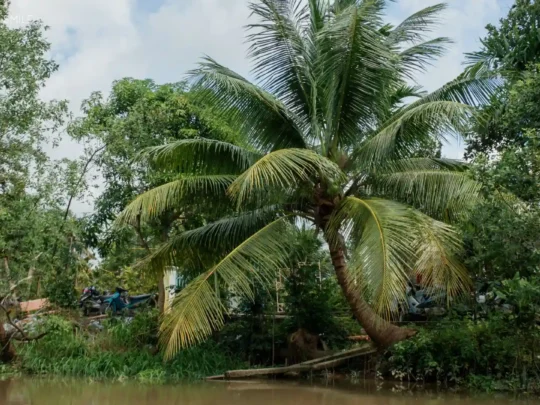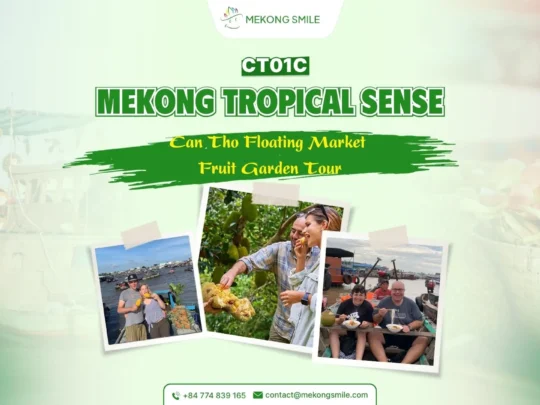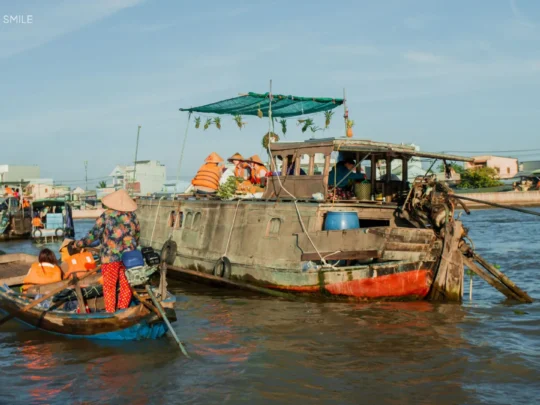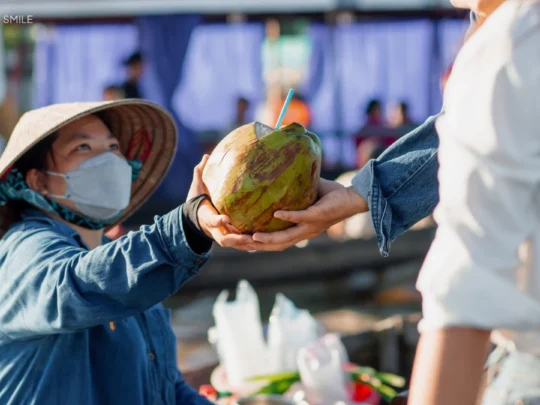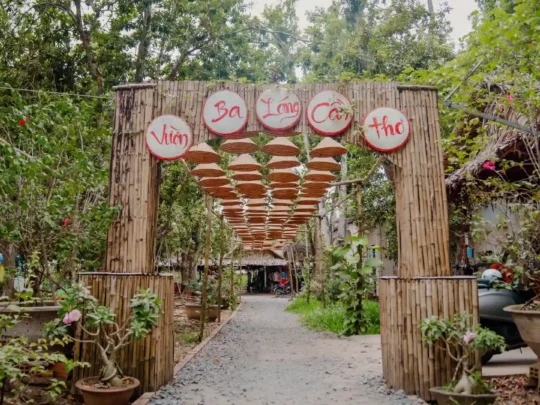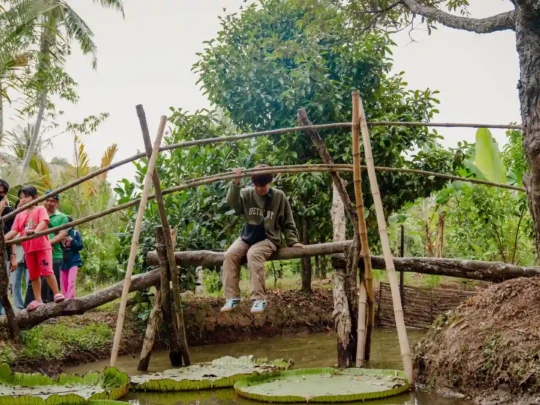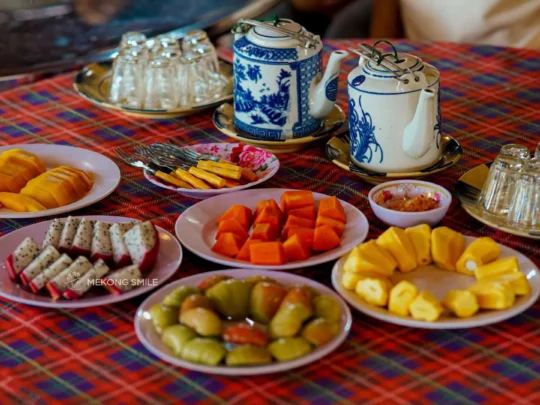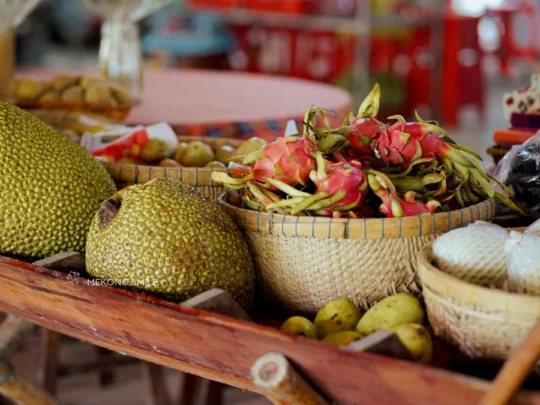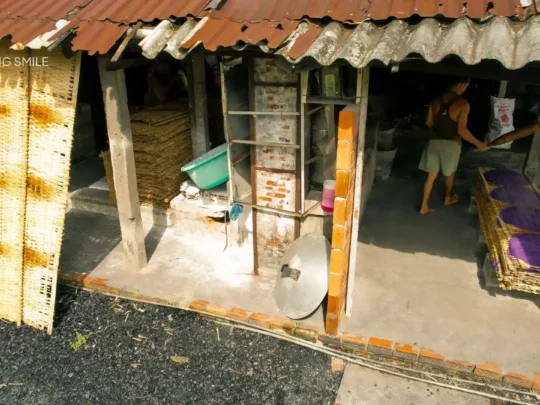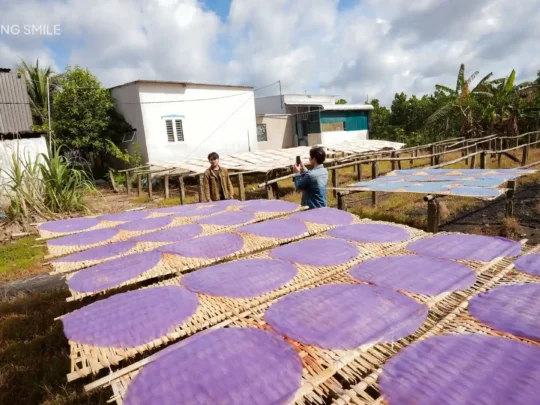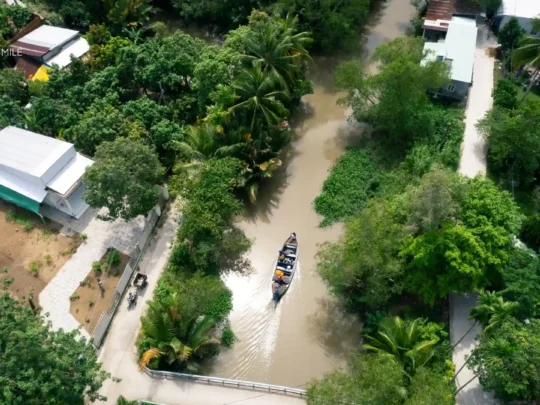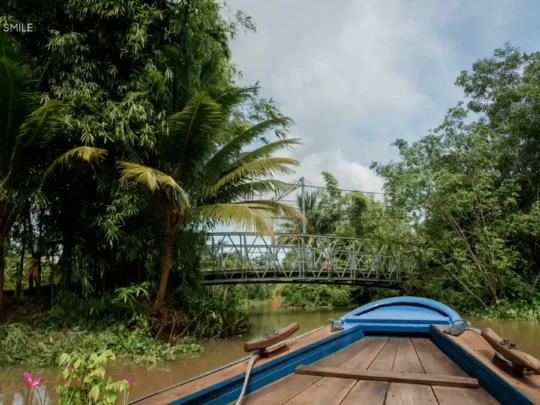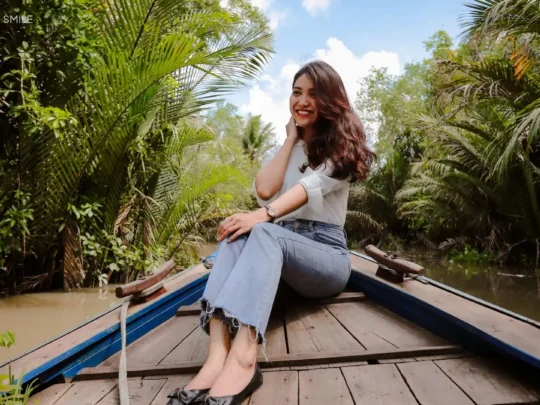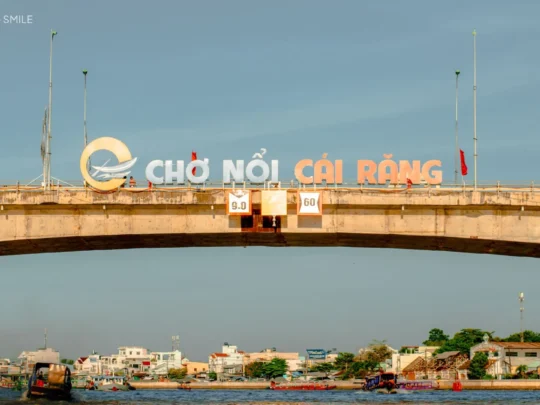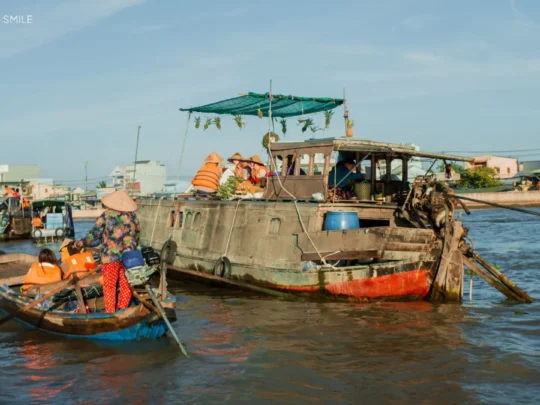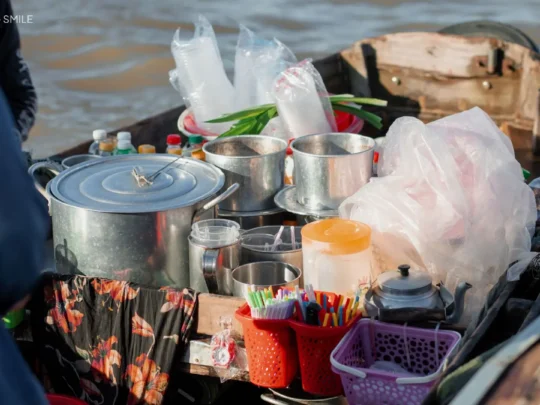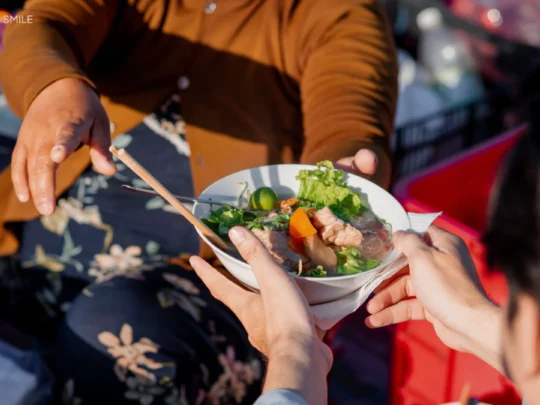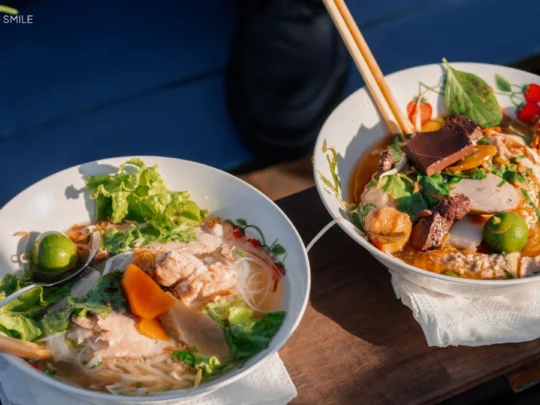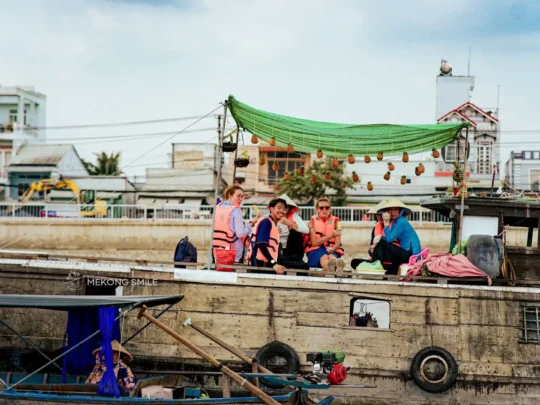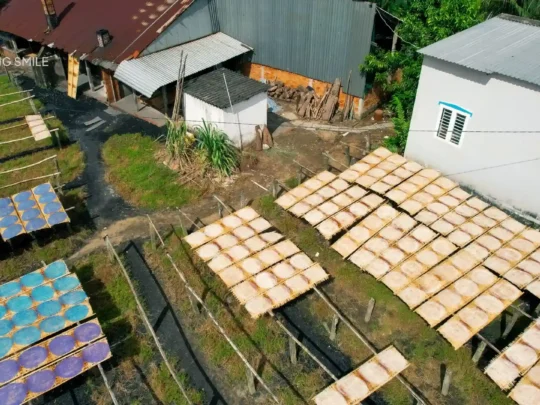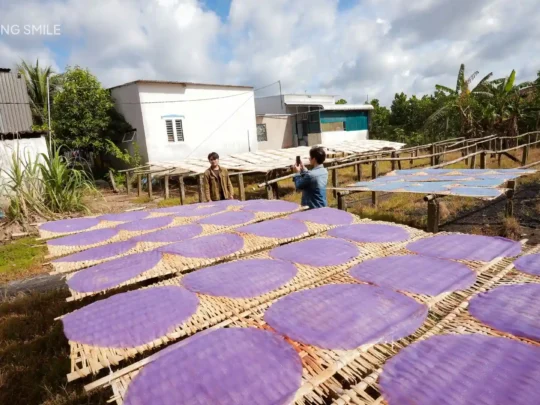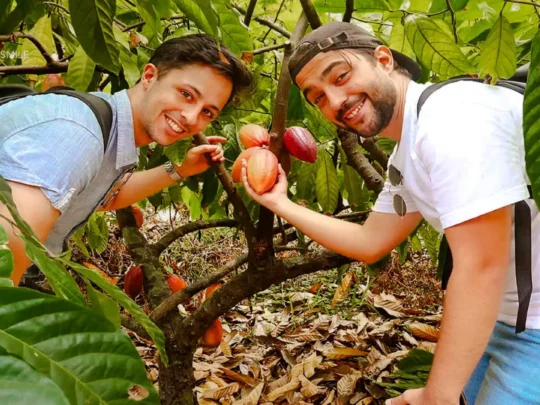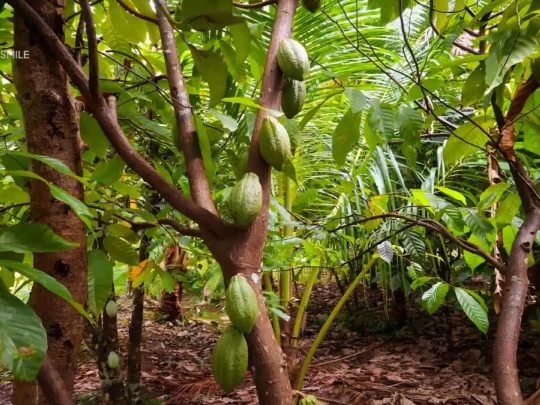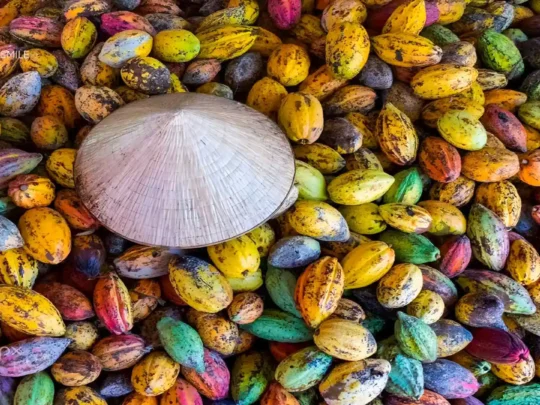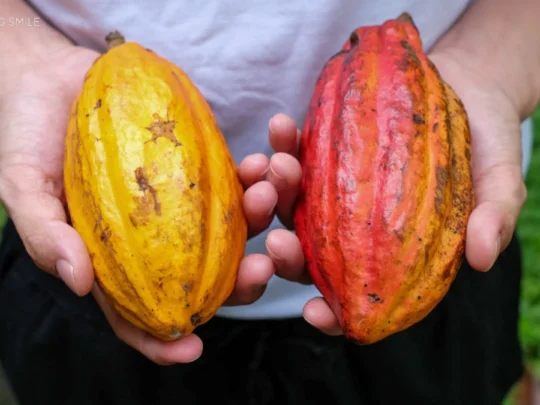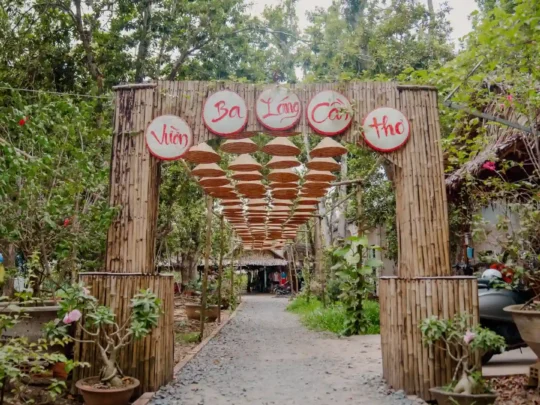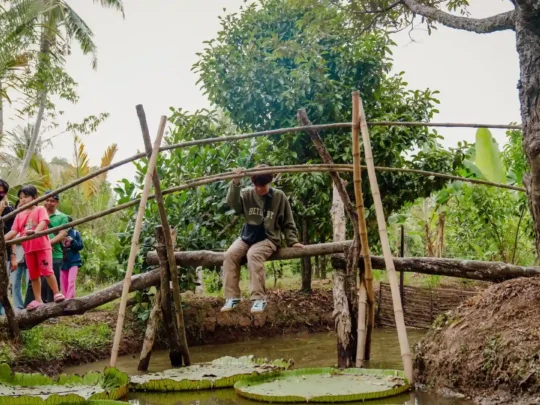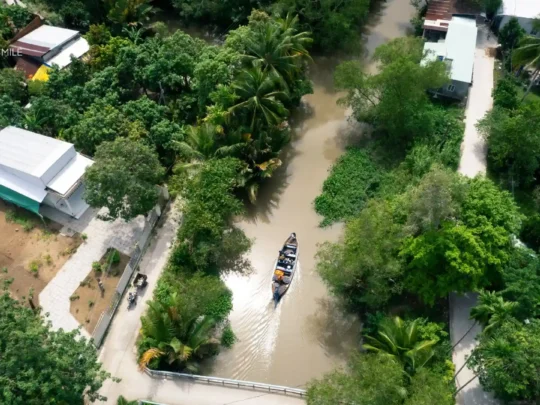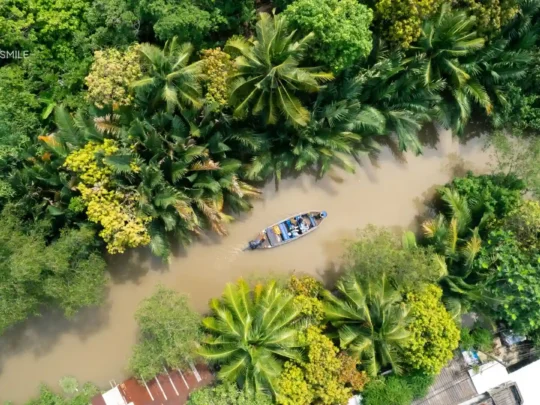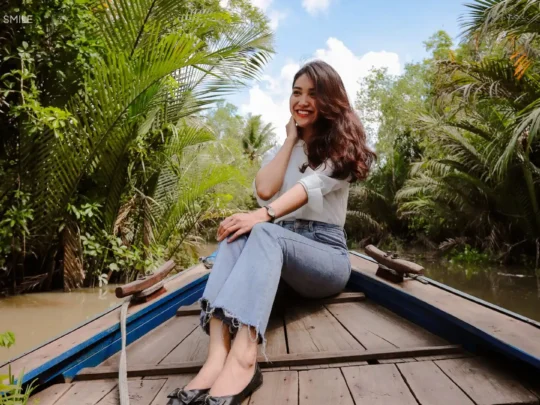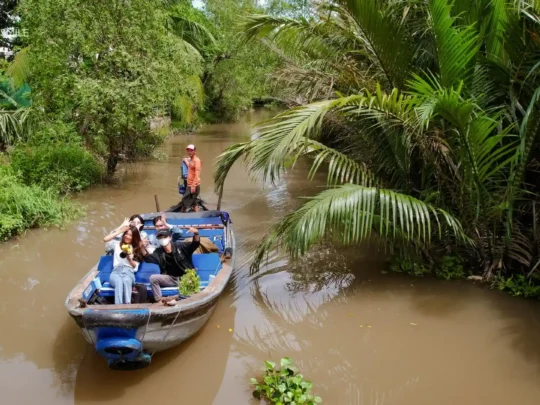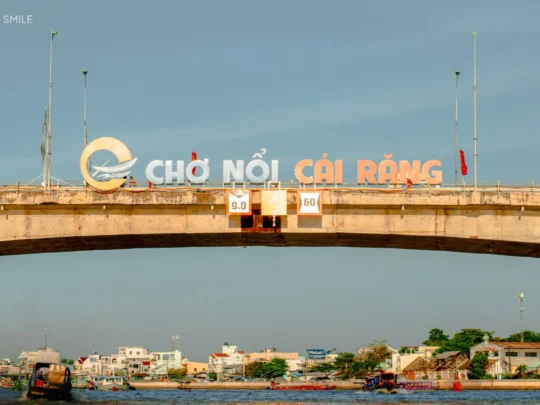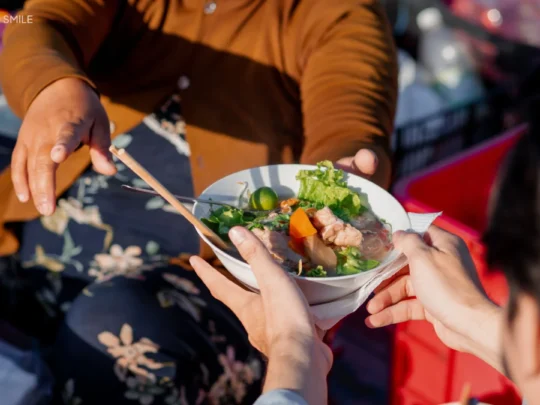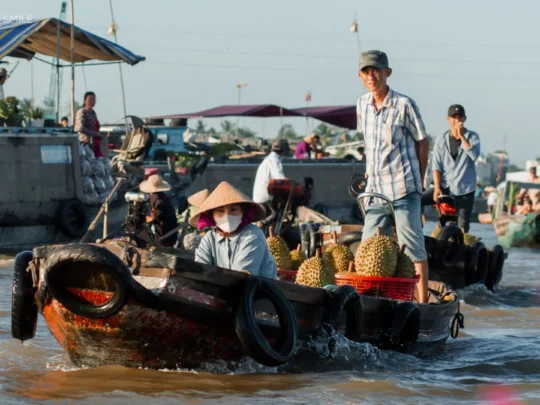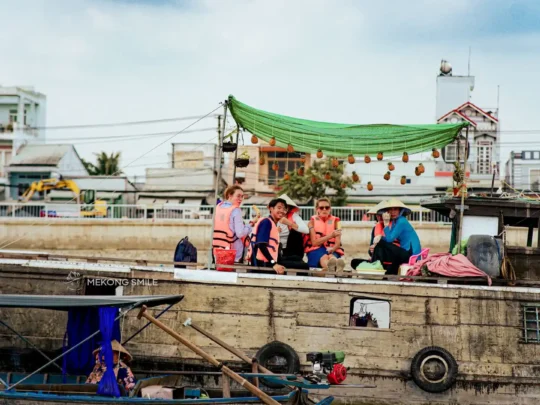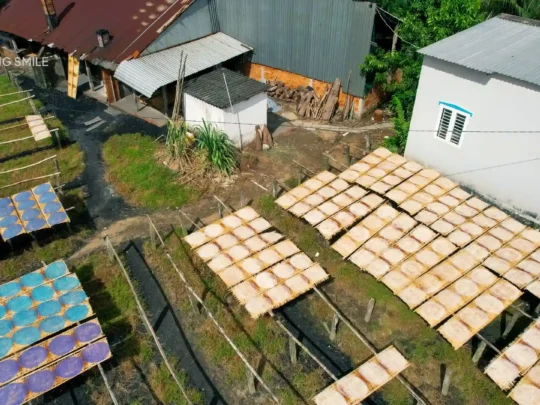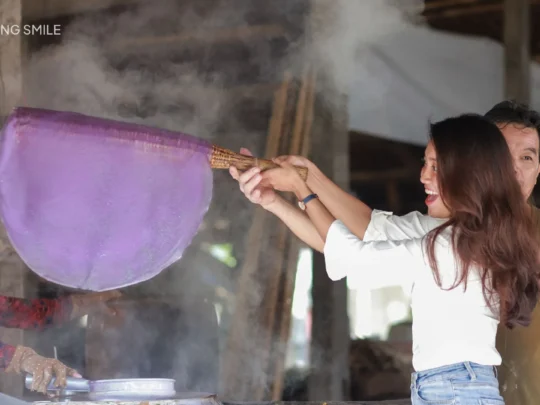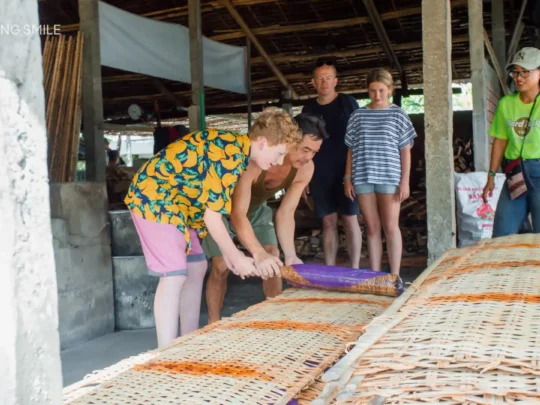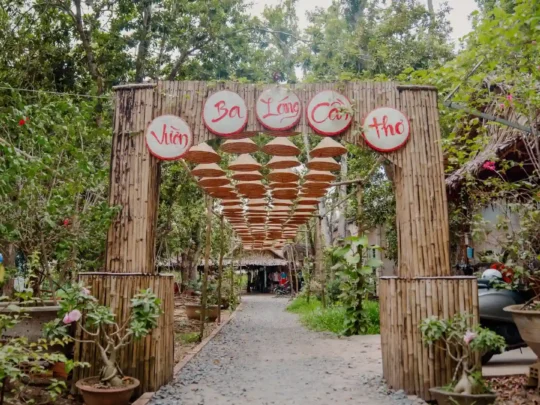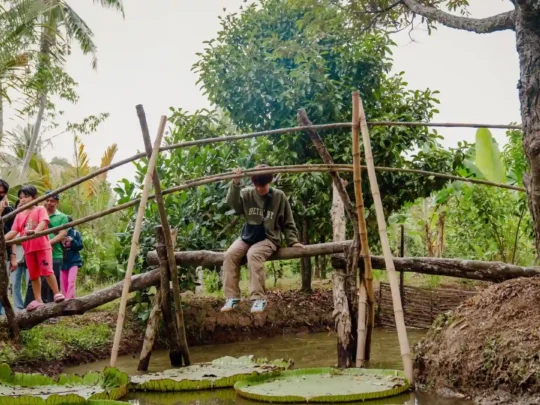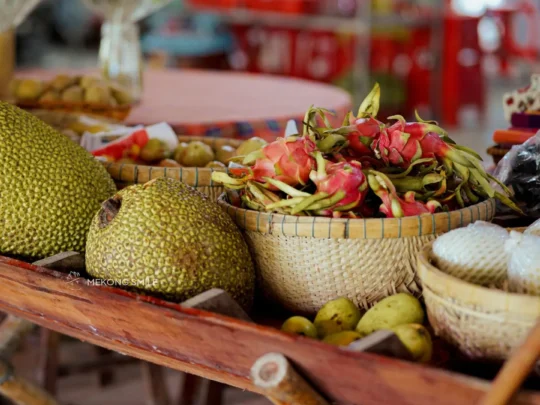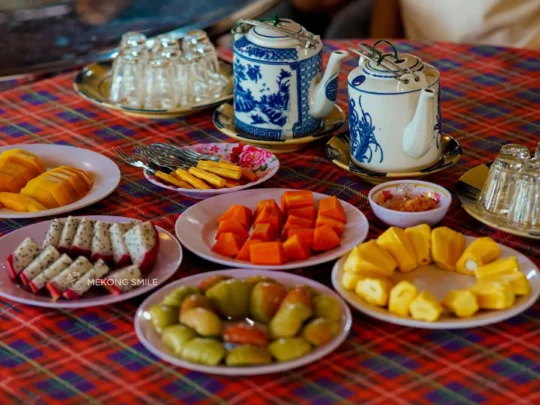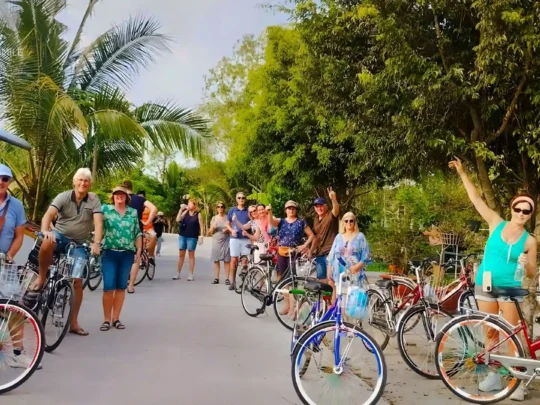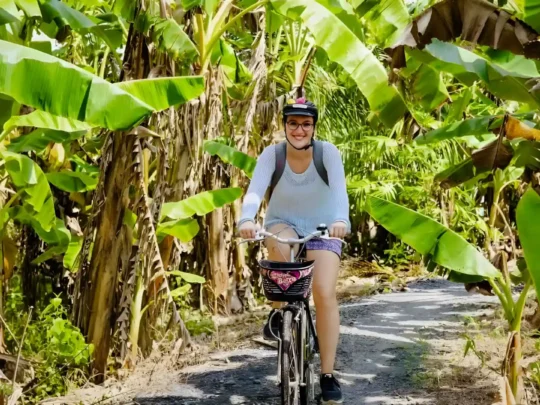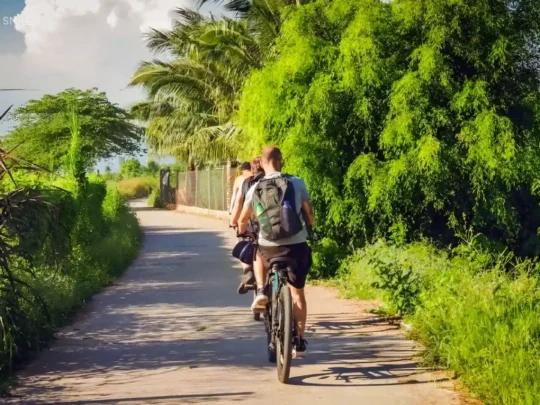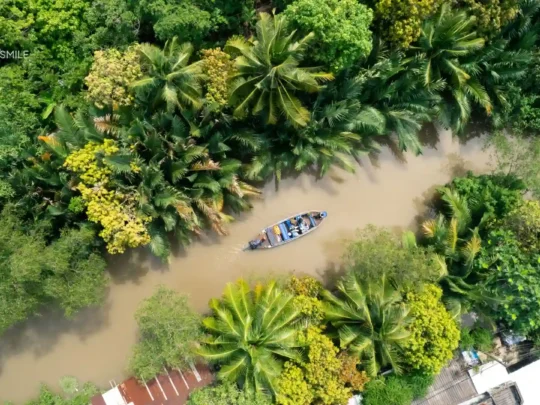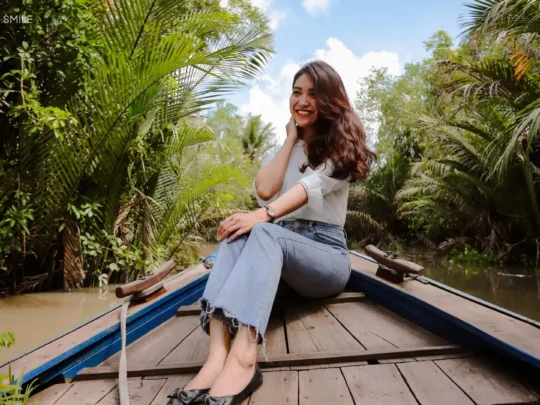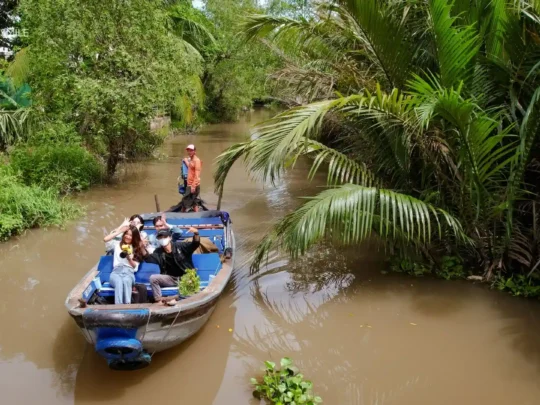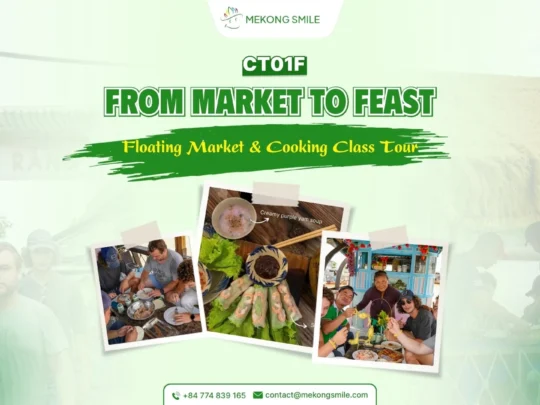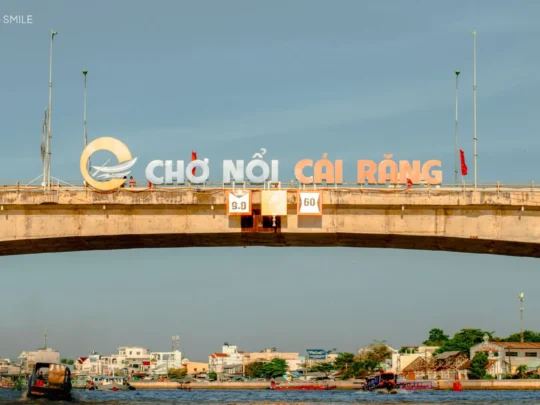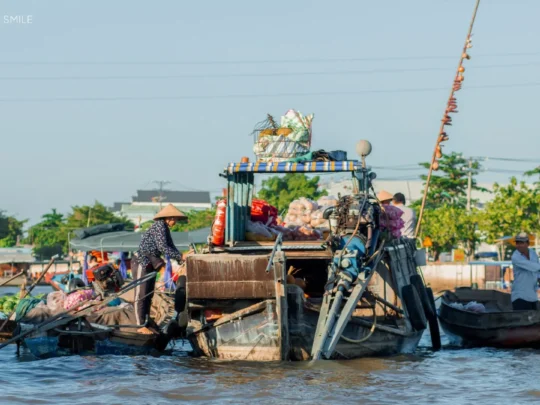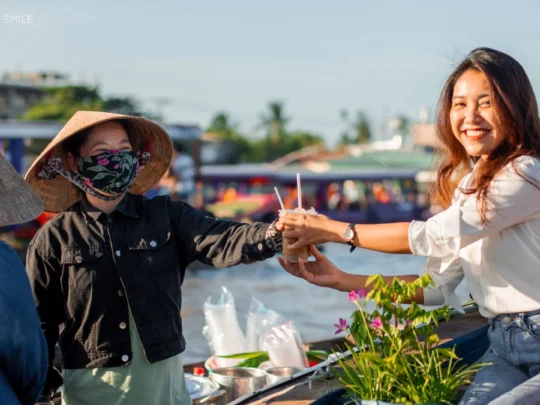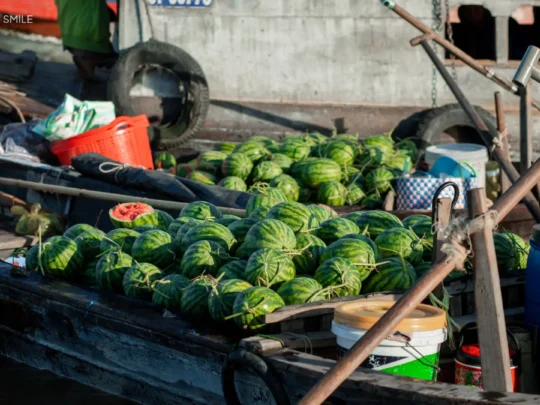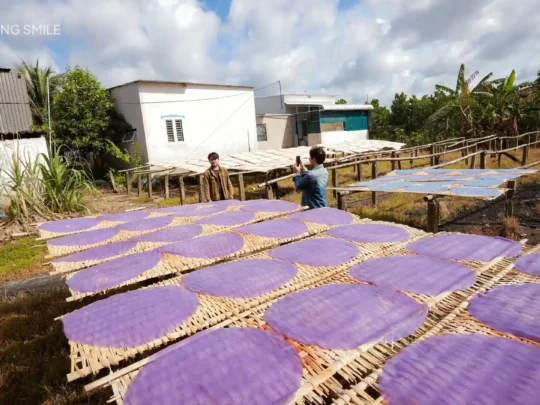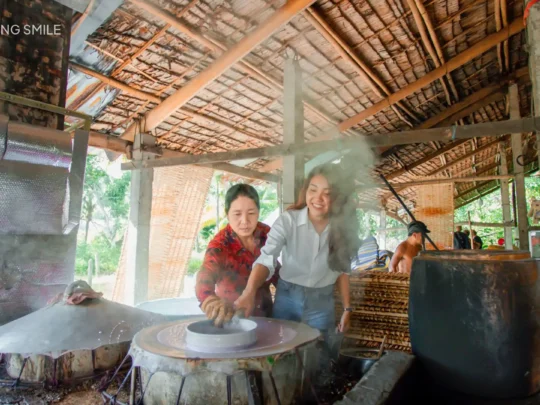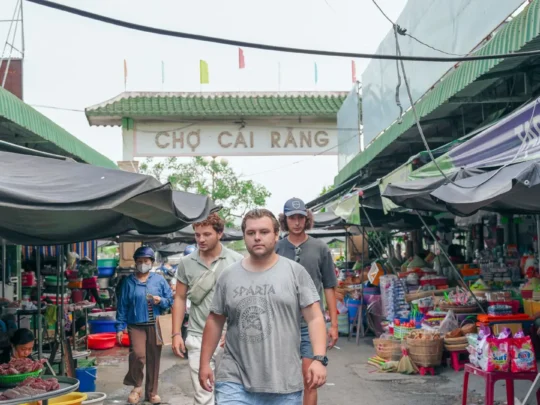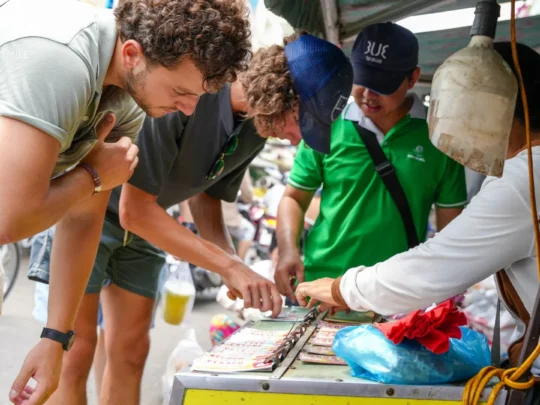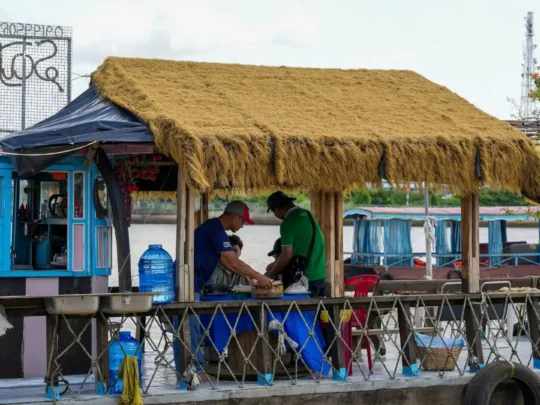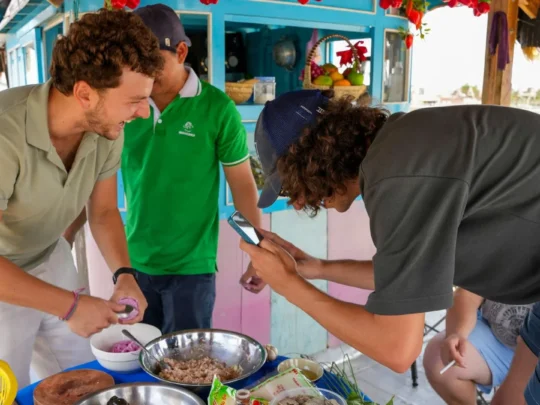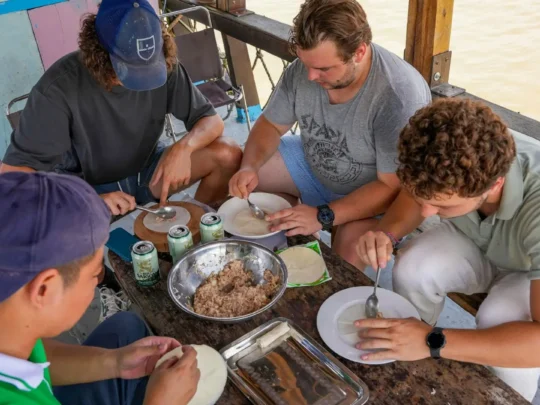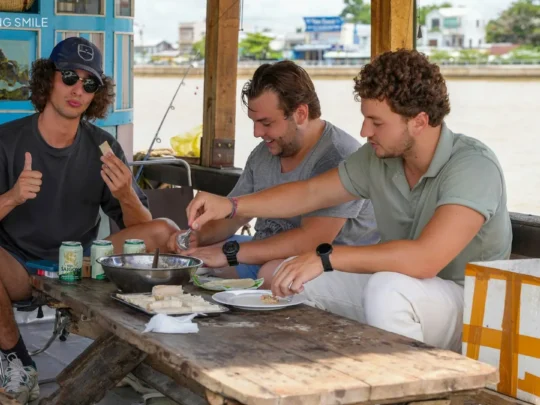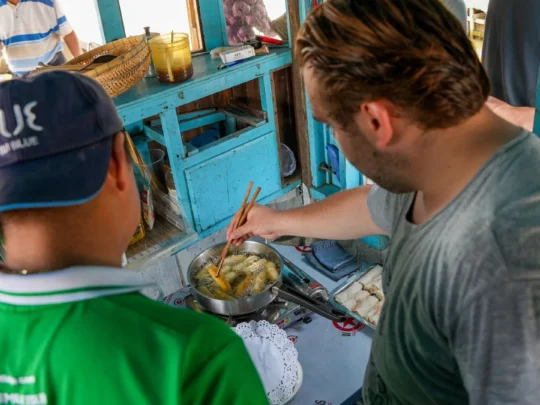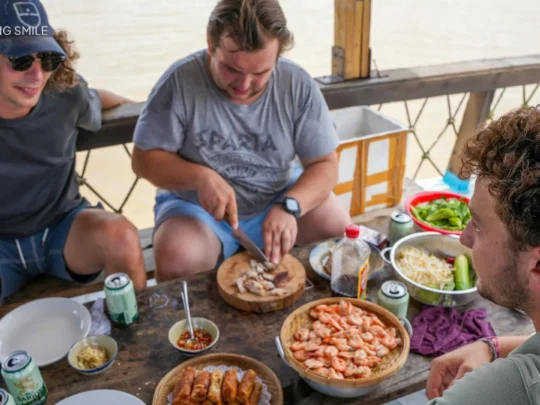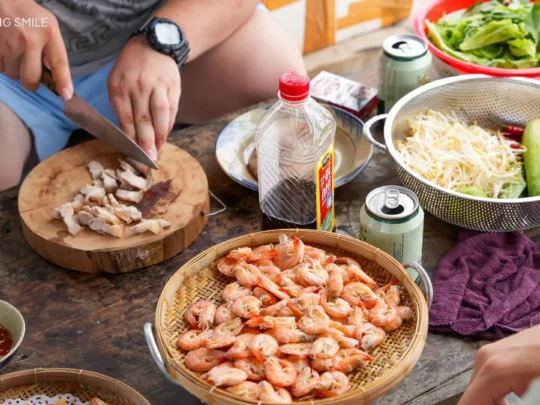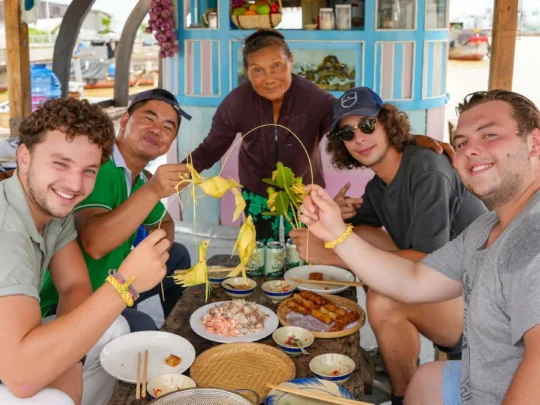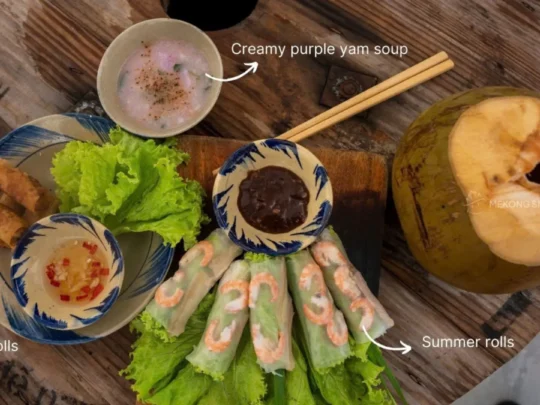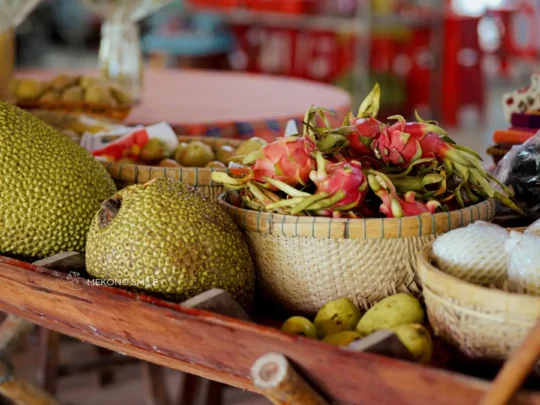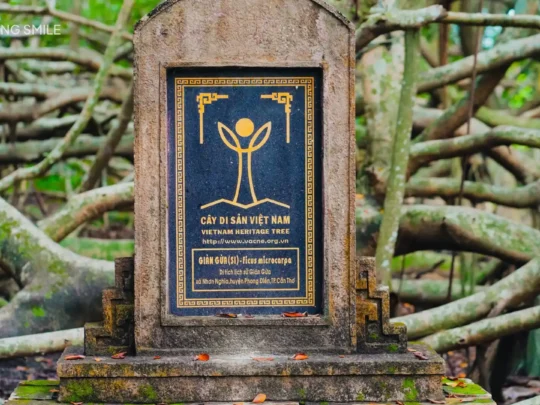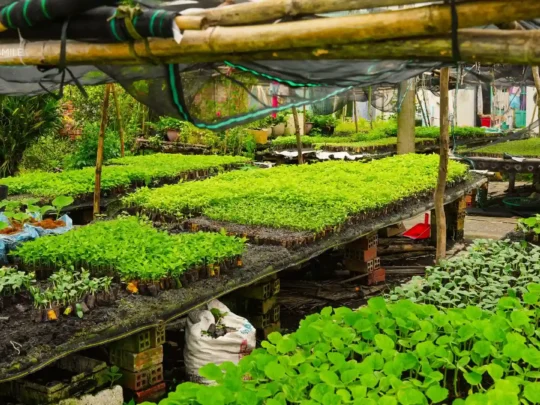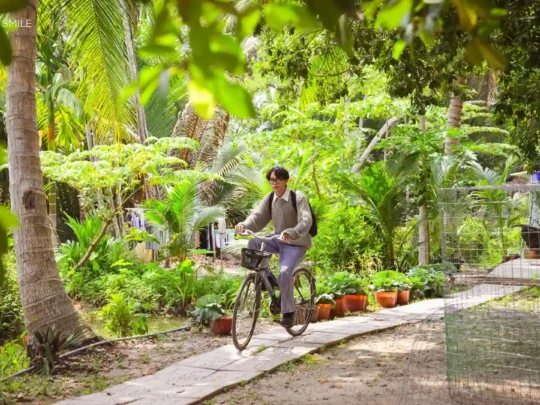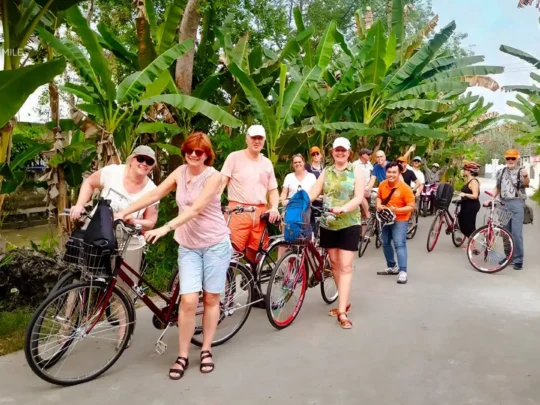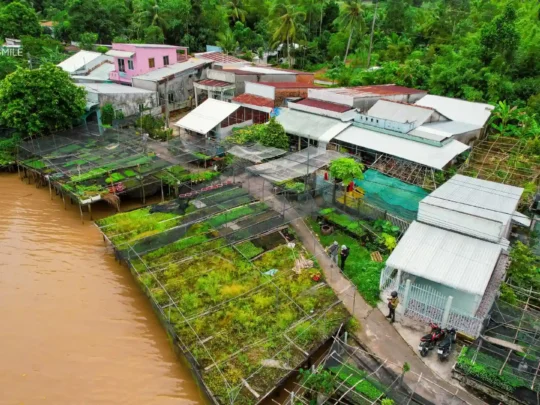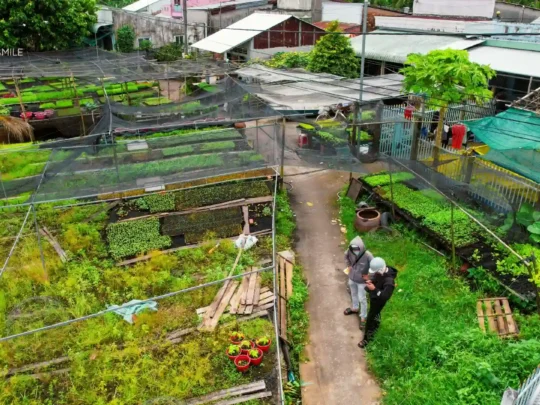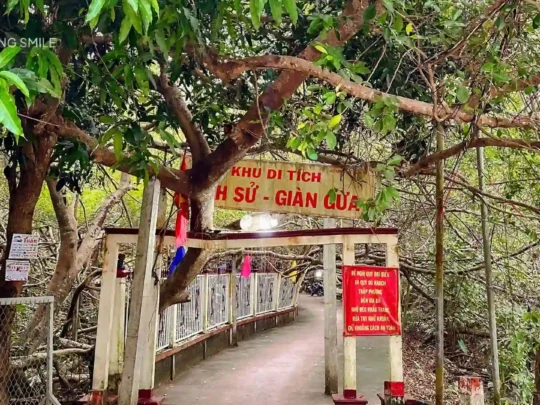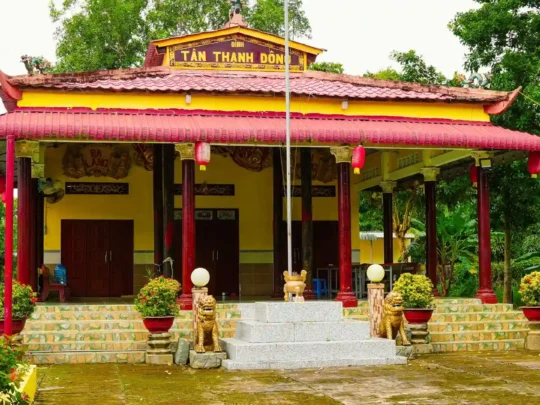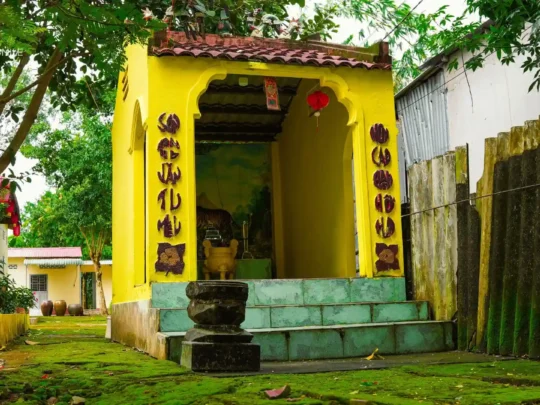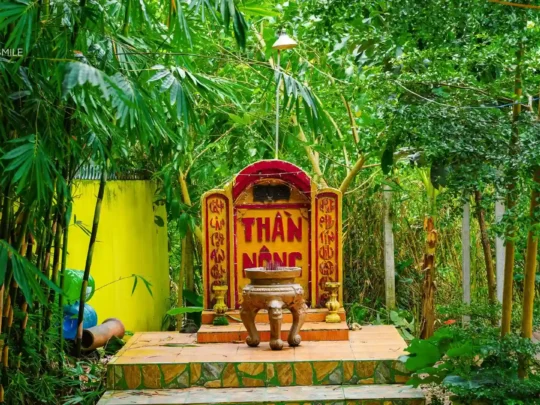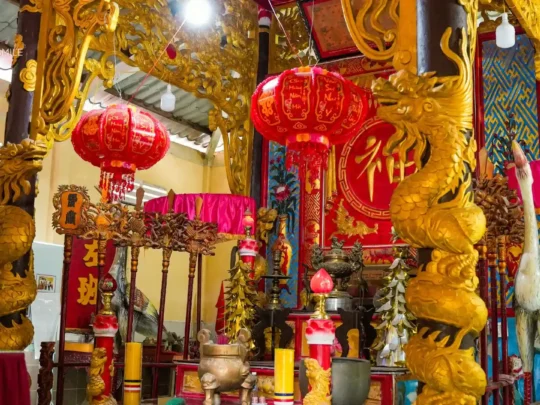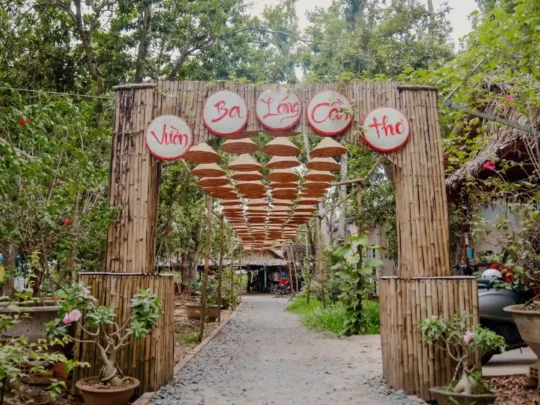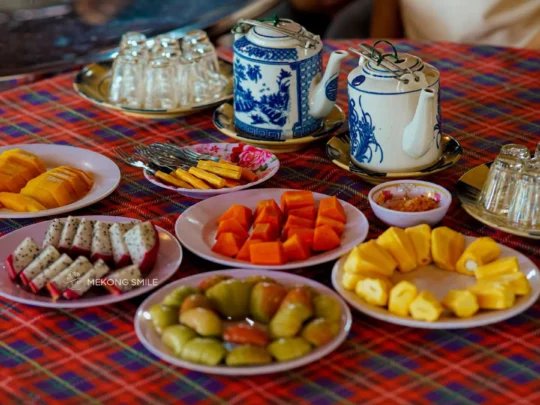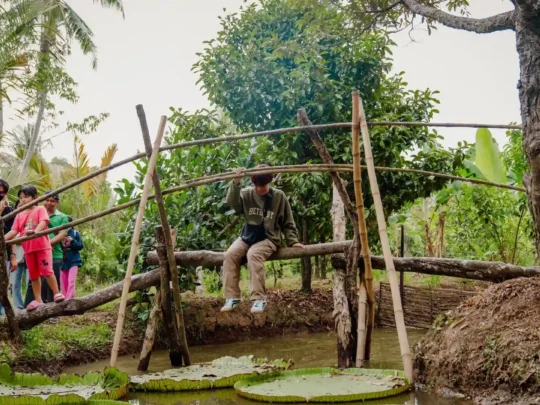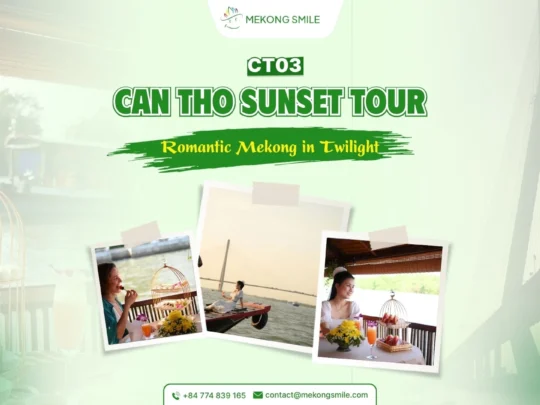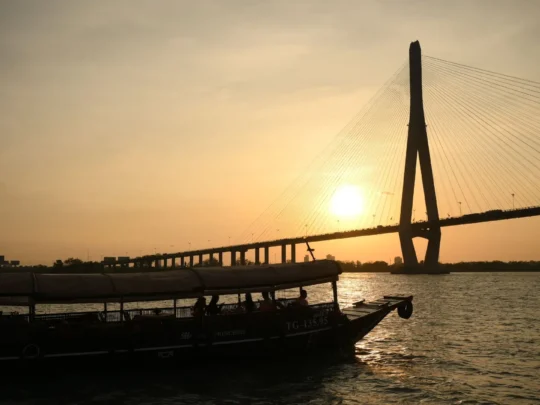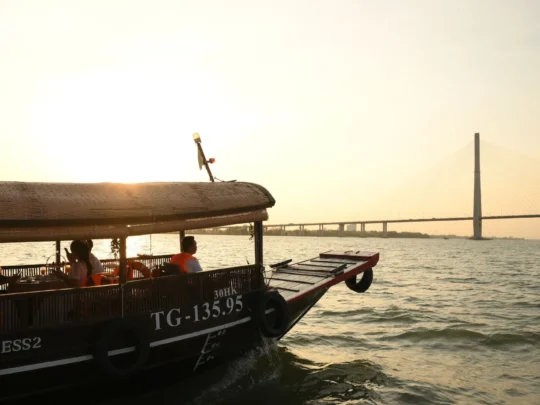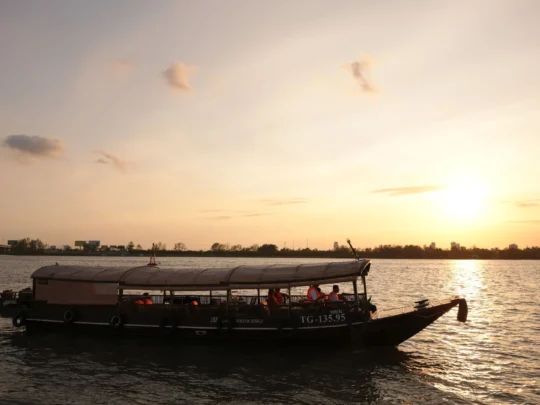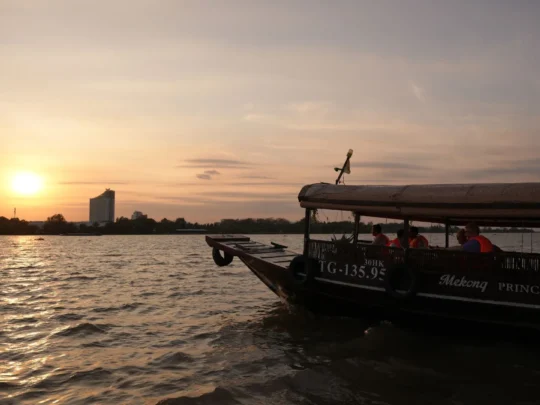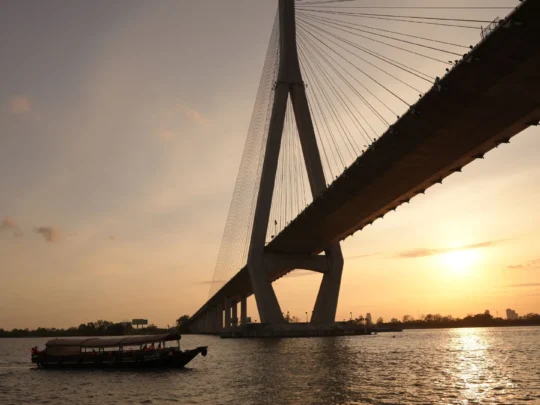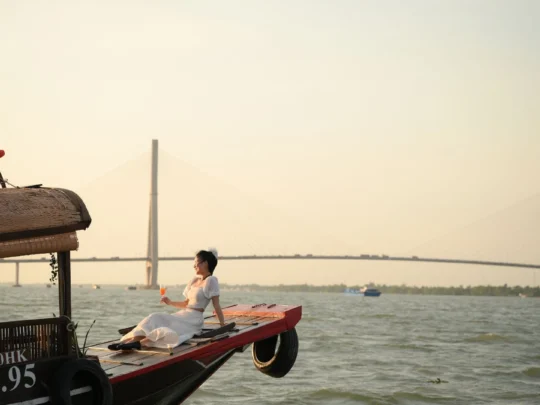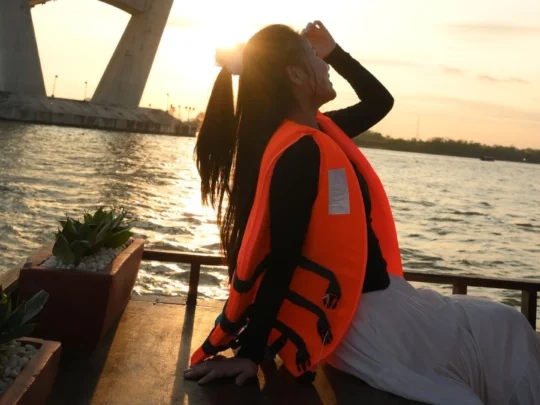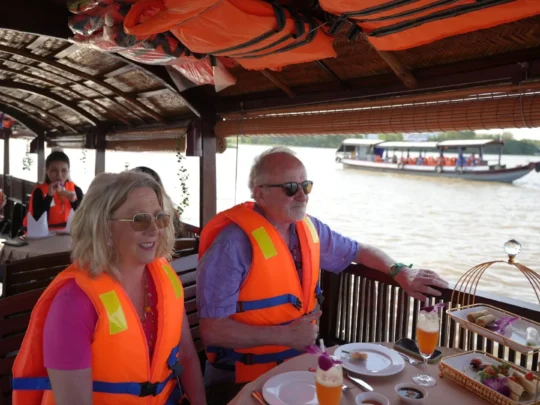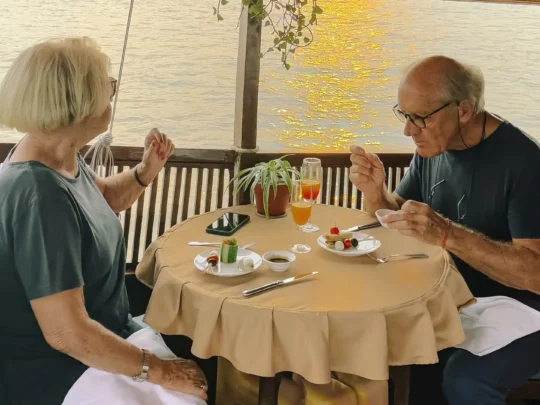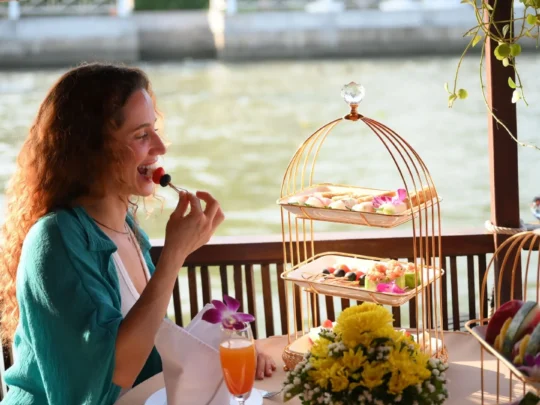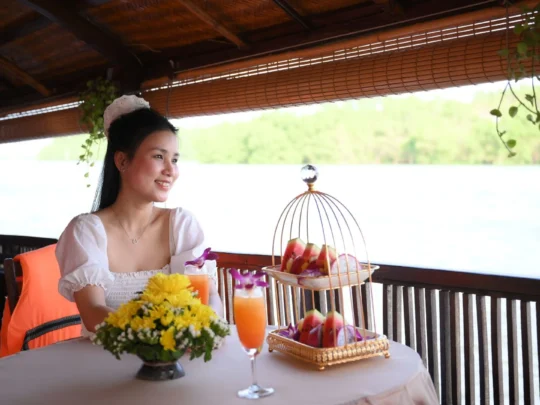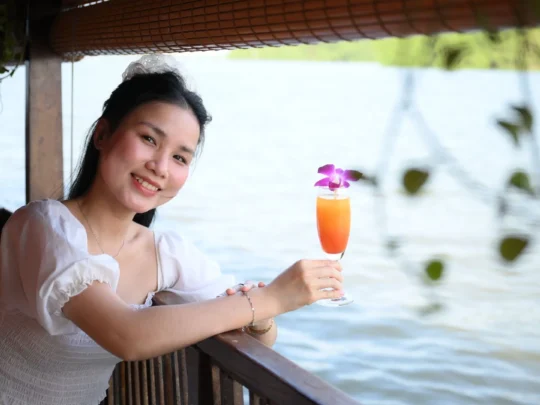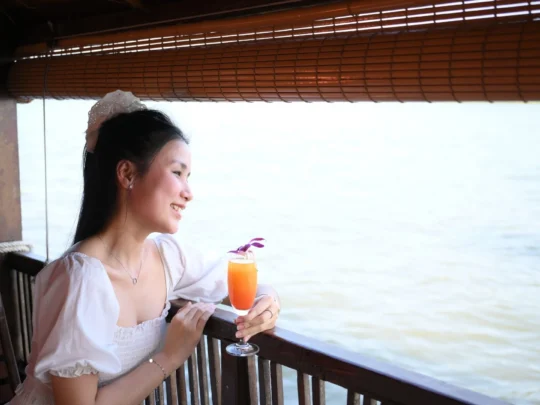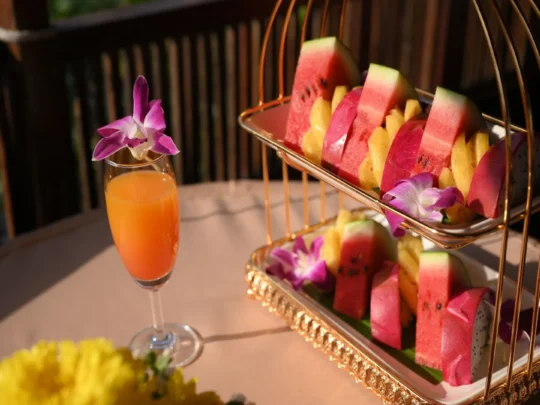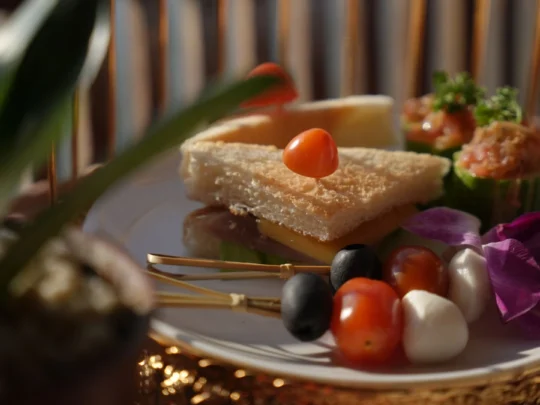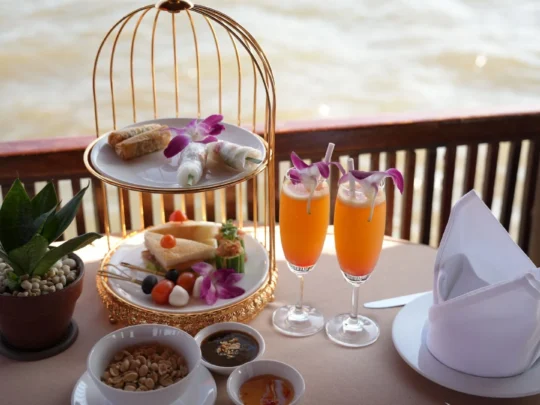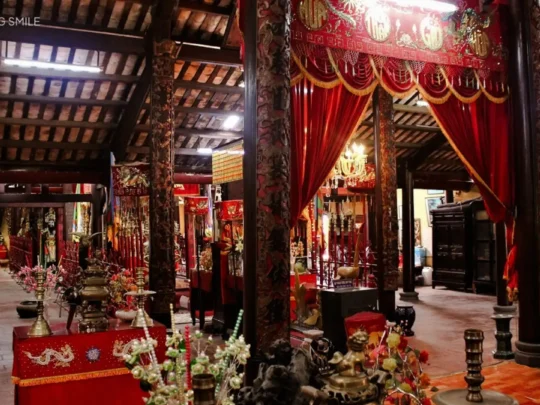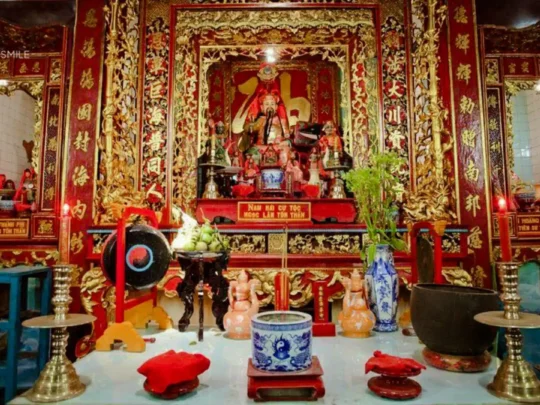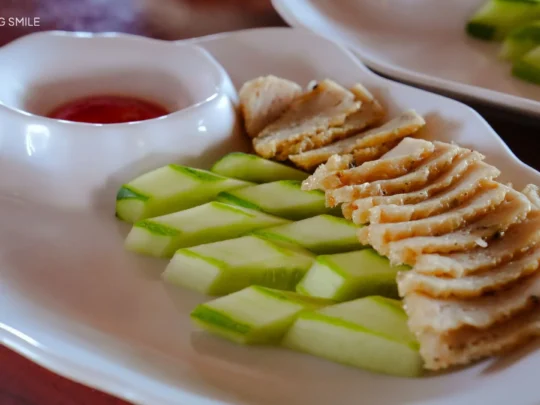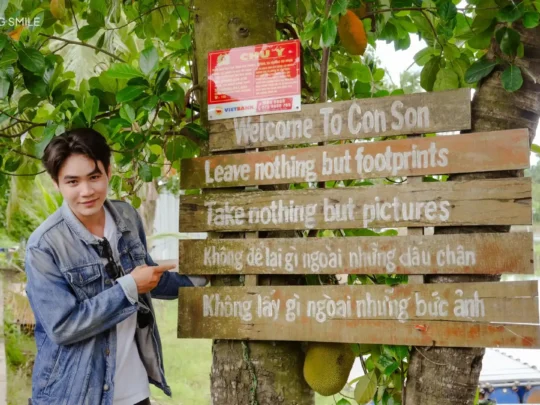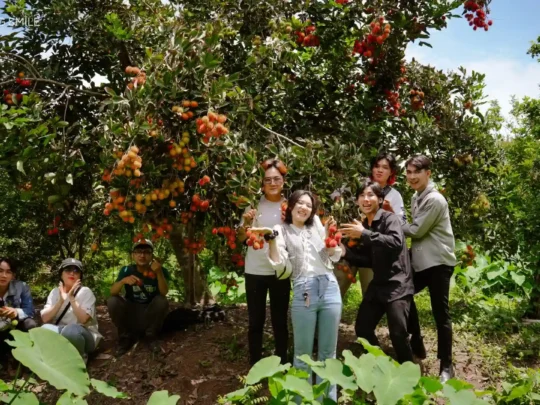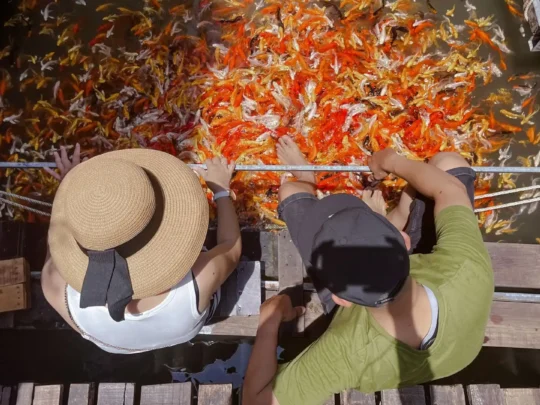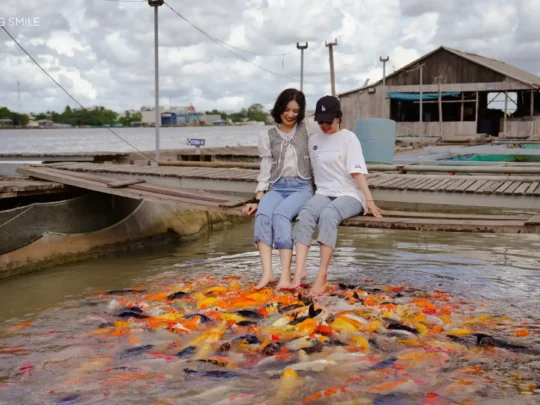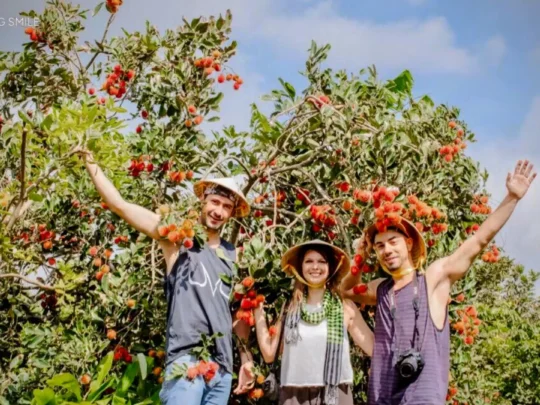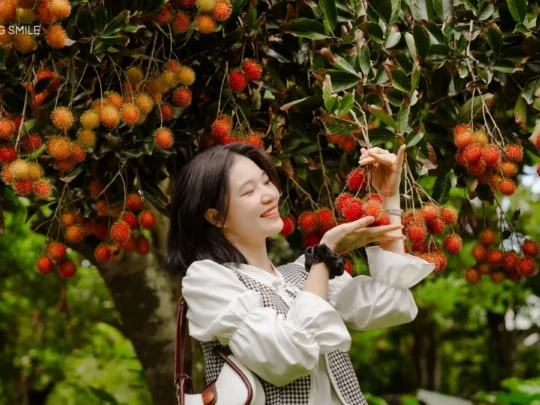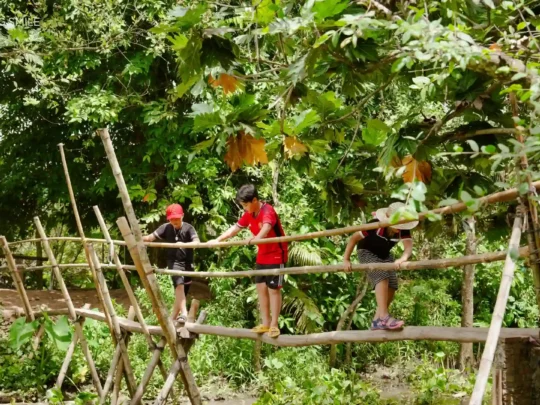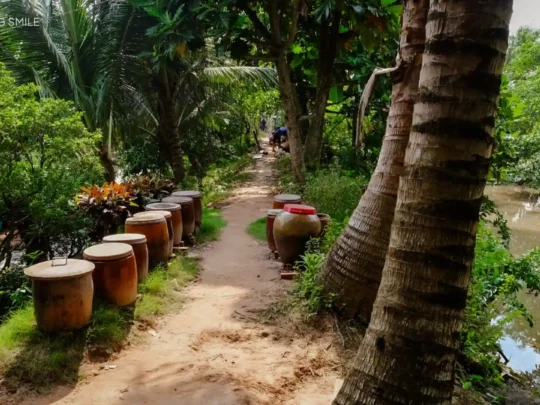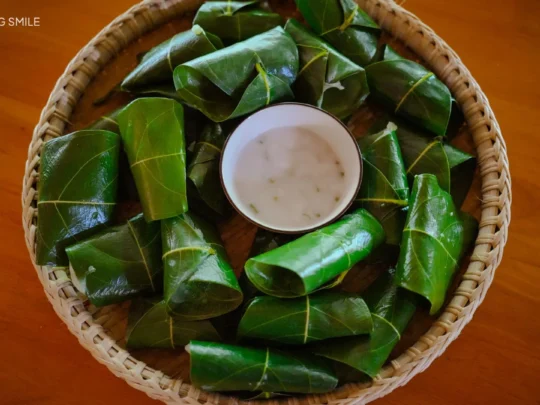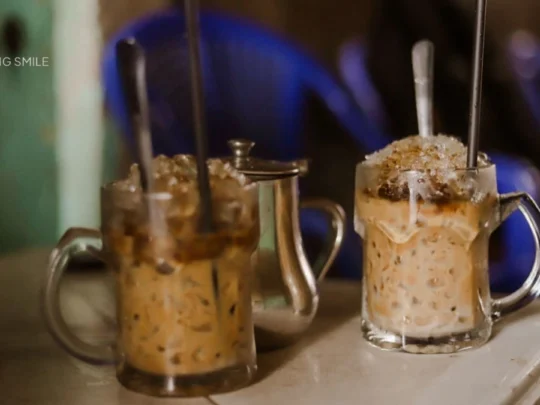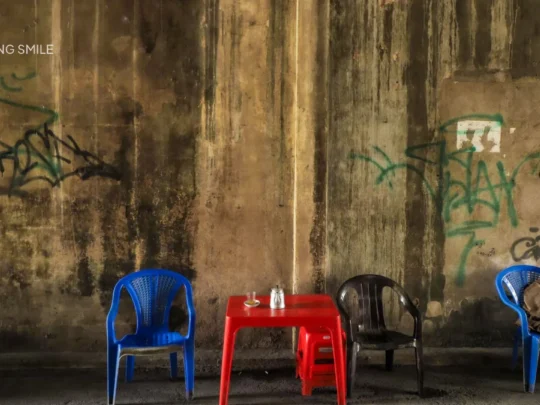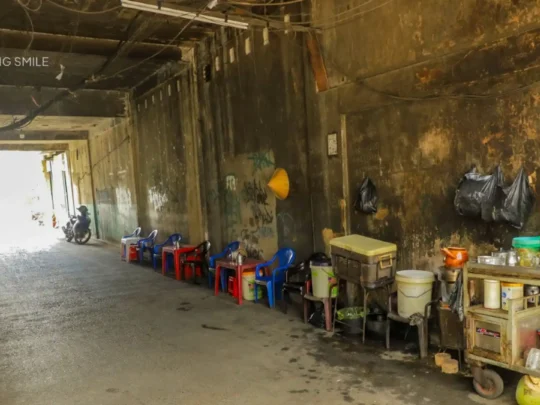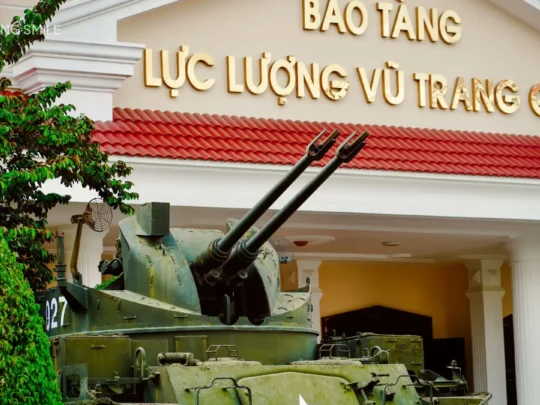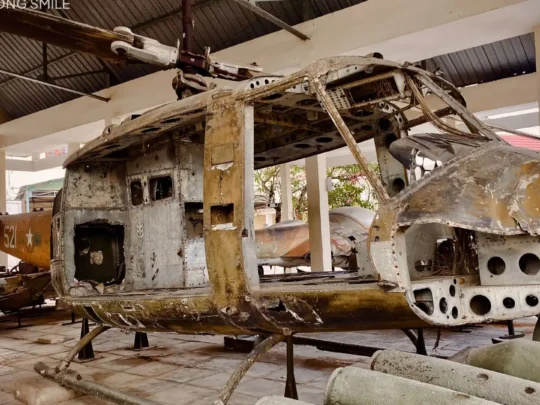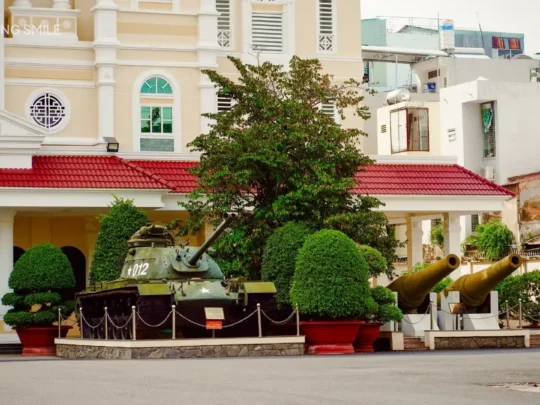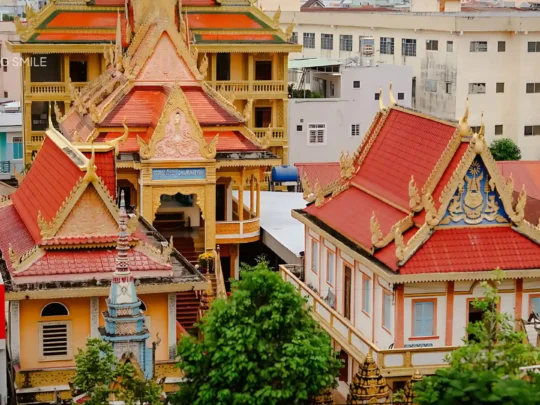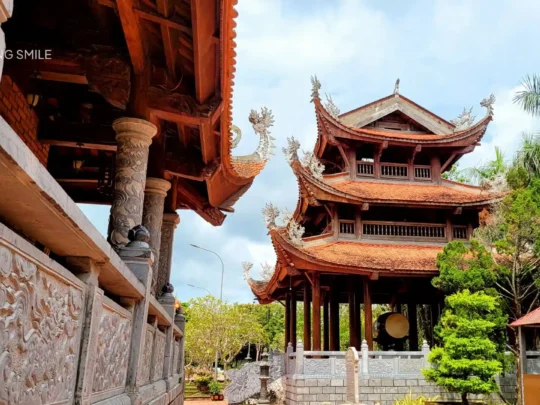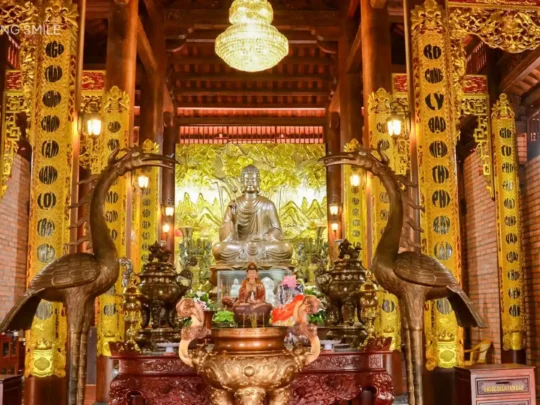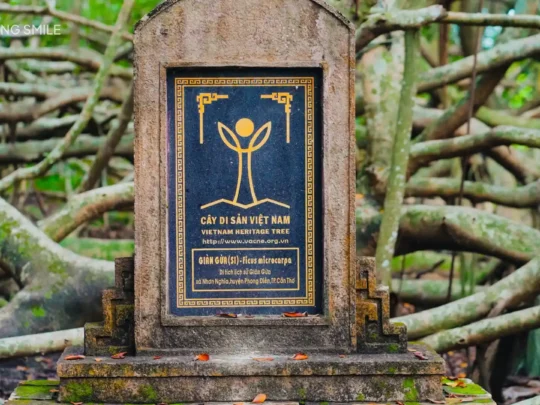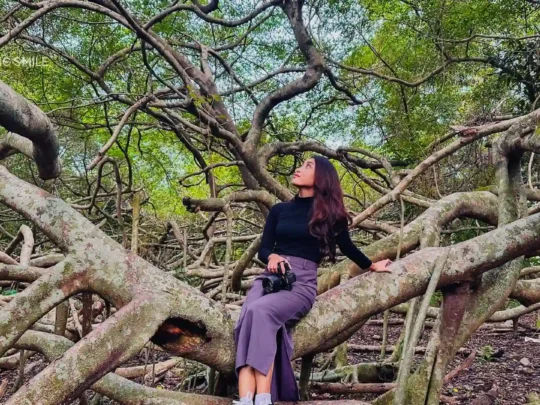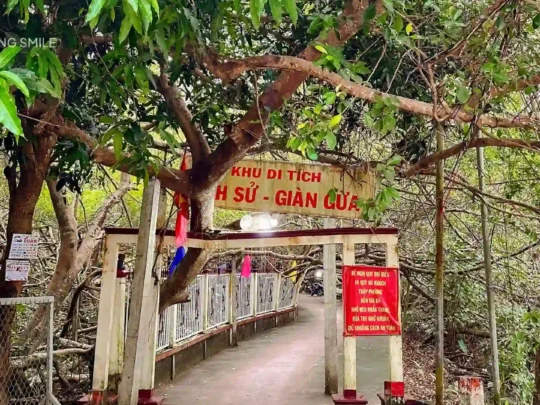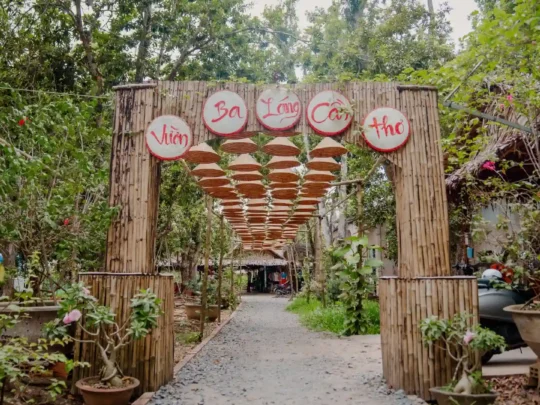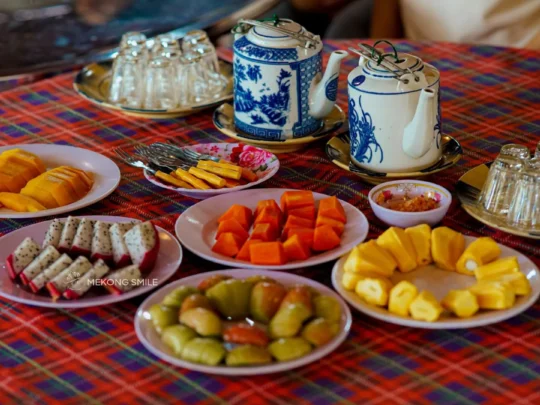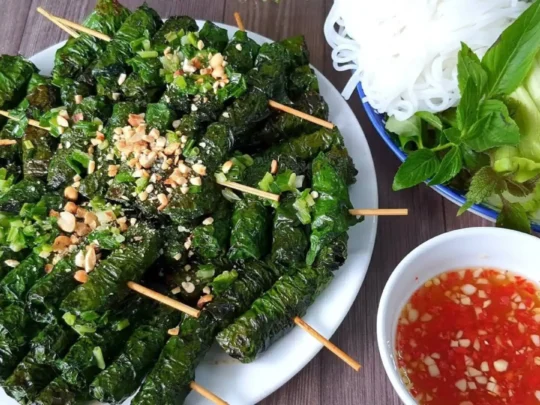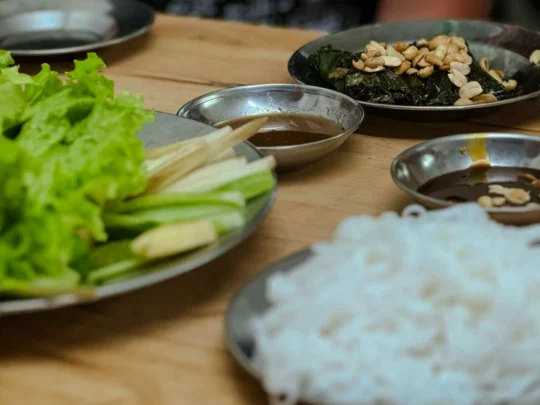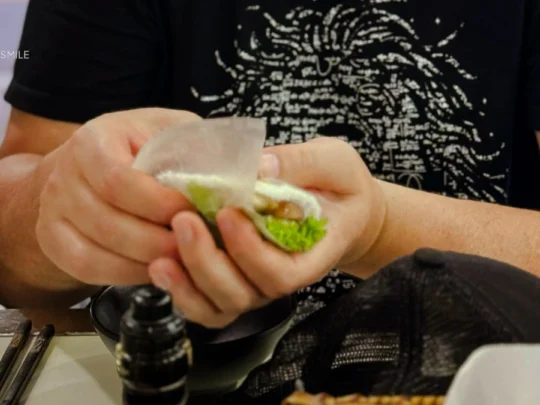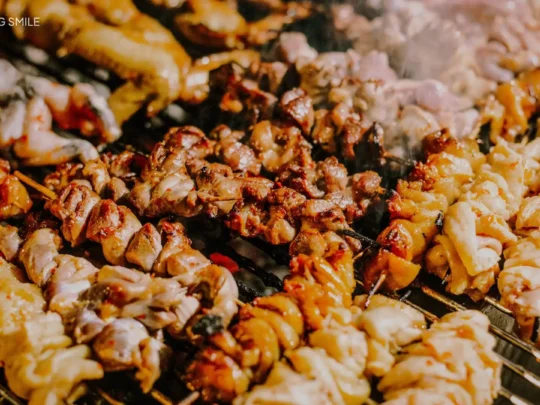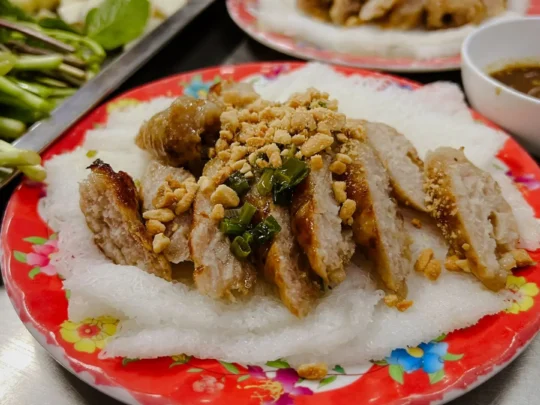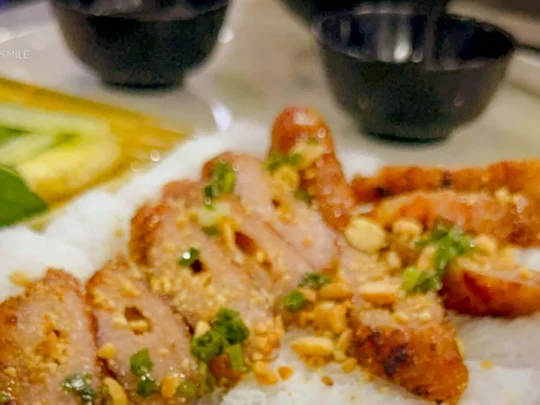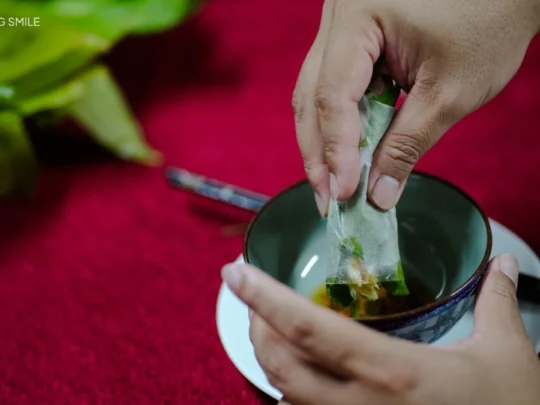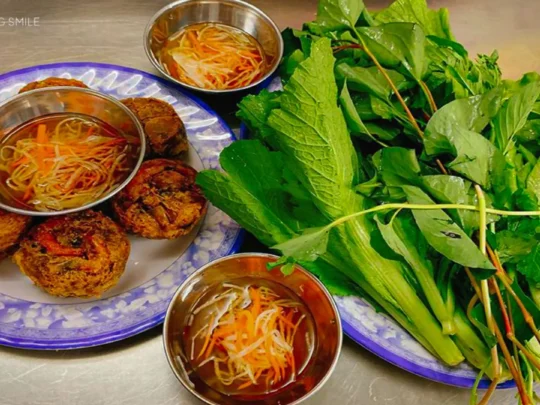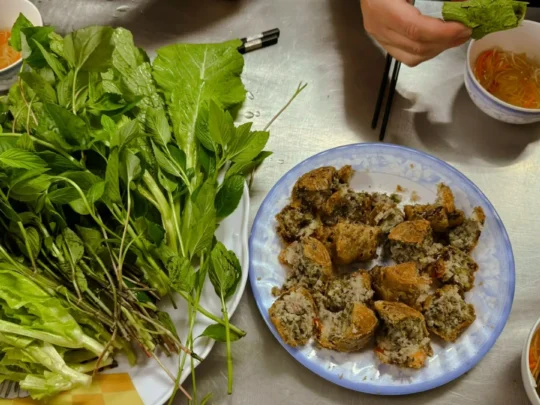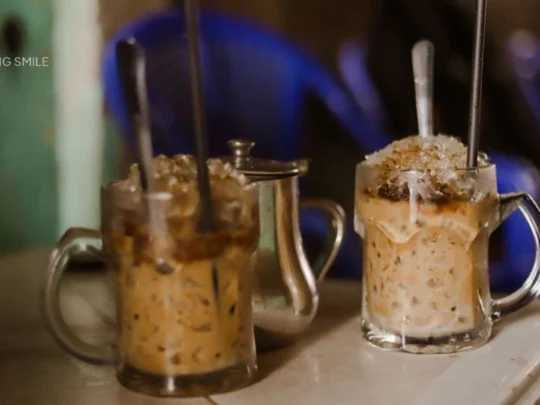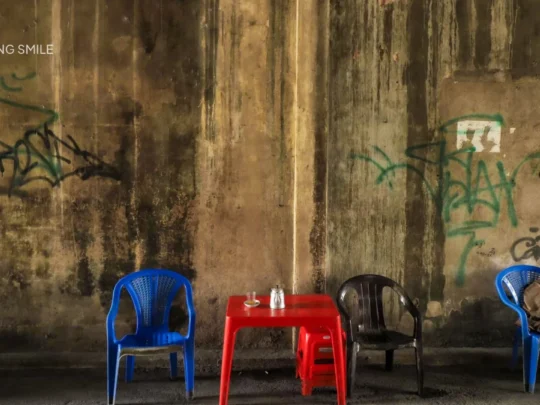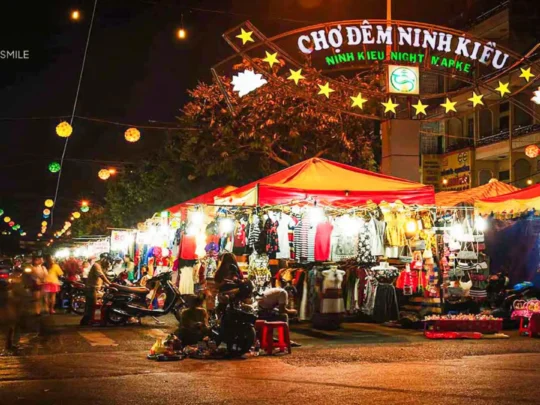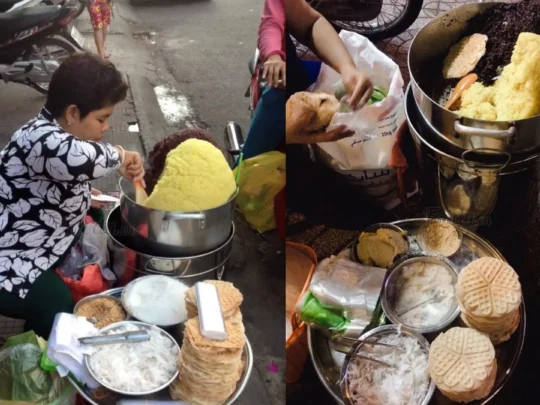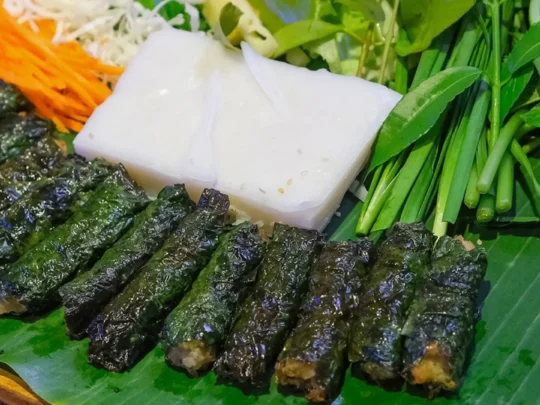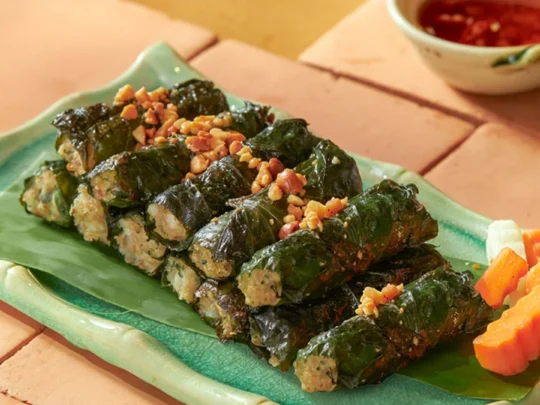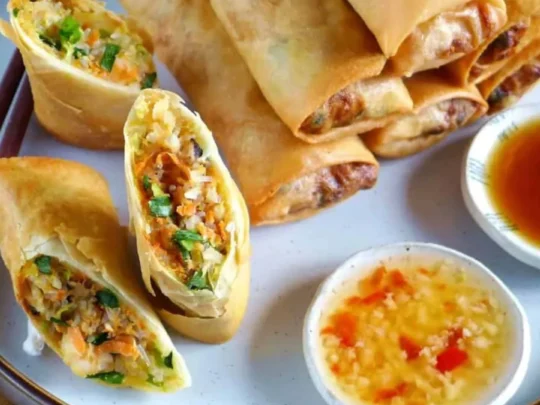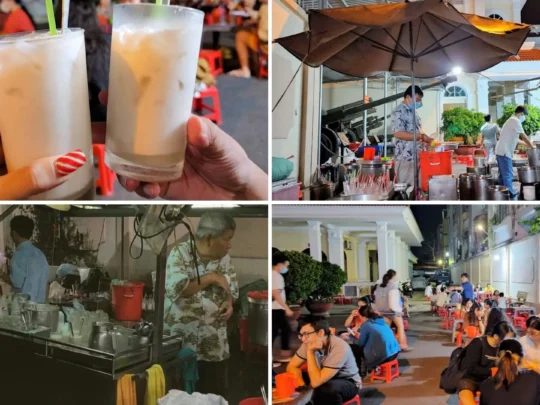Discover why Binh Thuy Ancient House stands as Can Tho’s most captivating heritage destination—a living testament to Vietnam’s fascinating colonial past. This isn’t just another preserved building; it’s a 115-year-old family mansion where history breathes through every corner, from its ornate French colonial façade to meticulously maintained Vietnamese ancestral altars.
Built in 1870 and lavishly renovated in 1911, the house showcases an extraordinary fusion of Eastern and Western architectural traditions. The Duong family, who still call this place home, have preserved five generations of antique furniture, rare ceramics, and the very walls that served as the romantic backdrop for the acclaimed film “The Lover.”

An Overview of Binh Thuy Ancient House
A glance at Binh Thuy Ancient House in Can Tho
- Built: 1870 (renovated 1911)
- Location: 144 Bui Huu Nghia Street, Binh Thuy Ward, Can Tho
- Opening Hours: 8:00 AM – 5:30 PM daily
- Entrance Fee: 20,000 – 50,000 VND
- Time Needed: 45-60 minutes
- Famous For: French colonial architecture, “The Lover” film location
Understanding Binh Thuy Ancient House: More Than Just an Old Building
Binh Thuy Ancient House (Nhà Cổ Bình Thủy in Vietnamese) represents a unique fusion of Eastern and Western architectural traditions that emerged during Vietnam’s colonial period. Built in 1870 and renovated extensively in 1911, the house belongs to the Duong family, whose descendants still reside in portions of the property today. This living heritage site gained international recognition when it served as a filming location for the French film “L’Amant” (The Lover) in 1992, based on Marguerite Duras’s semi-autobiographical novel.
Unlike preserved museum pieces frozen in time, Binh Thuy Ancient House maintains its role as a family home, creating an authentic atmosphere that allows visitors to experience Vietnamese heritage as it was genuinely lived.

The Historical Journey: From 1870 to Present Day
The story of Binh Thuy Ancient House begins with the Duong family, prosperous landowners and merchants who accumulated significant wealth through rice cultivation and trade during the late Nguyen Dynasty. The original structure, built in 1870, reflected traditional Vietnamese architectural principles with wooden construction and courtyard design. However, the transformative renovation of 1911 marked a pivotal moment when the family incorporated French colonial influences, creating the magnificent hybrid structure visitors see today.
This renovation coincided with the height of French influence in Cochinchina (southern Vietnam), when wealthy Vietnamese families often adopted European architectural elements as symbols of prestige and modernity. The Duong family commissioned skilled craftsmen from both Vietnam and France to create intricate decorative elements, imported luxury materials, and incorporated modern conveniences rare in early 20th-century Vietnam.
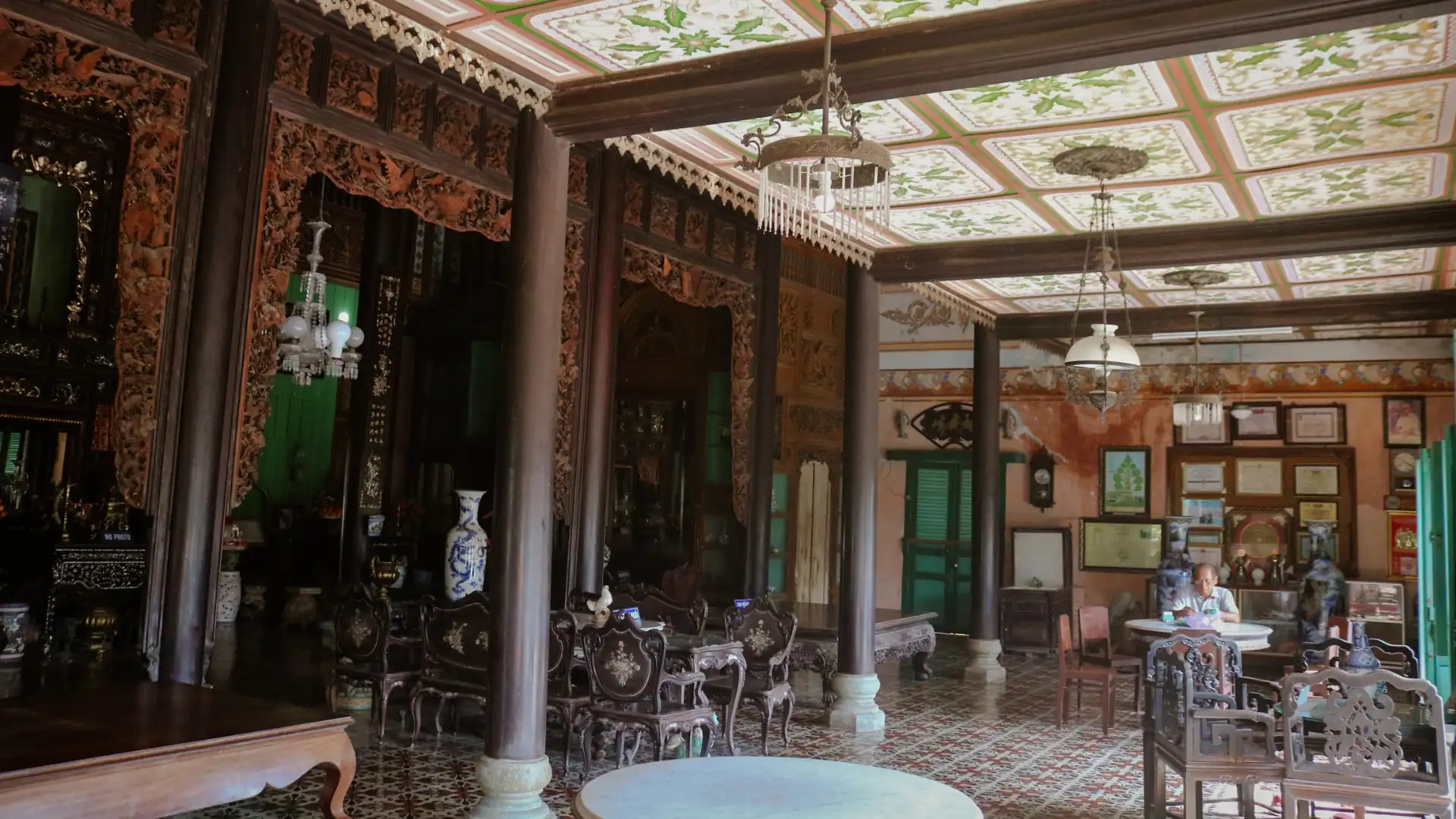
Architectural Splendor: A Detailed Look at Design Elements
The Exterior: French Colonial Elegance Meets Vietnamese Practicality
The house’s facade immediately captures attention with its distinctive yellow ochre walls trimmed in forest green—a color scheme typical of French colonial architecture throughout Indochina. The two-story structure features classical European elements including ornate iron balconies with intricate scrollwork, tall shuttered windows designed for tropical ventilation, and decorative cornices that demonstrate skilled craftsmanship.
The symmetrical layout follows French architectural conventions, with a central entrance flanked by matching wings. However, practical adaptations for the Mekong Delta’s climate are evident throughout: high ceilings promote air circulation, deep overhanging eaves provide shade and rain protection, and the elevated foundation protects against seasonal flooding common in this delta region.
The entrance courtyard incorporates a traditional Vietnamese garden design philosophy, featuring carefully arranged tropical plants, decorative ceramic pots, and a covered walkway that creates transitional space between public street and private residence—a concept fundamental to Vietnamese domestic architecture.
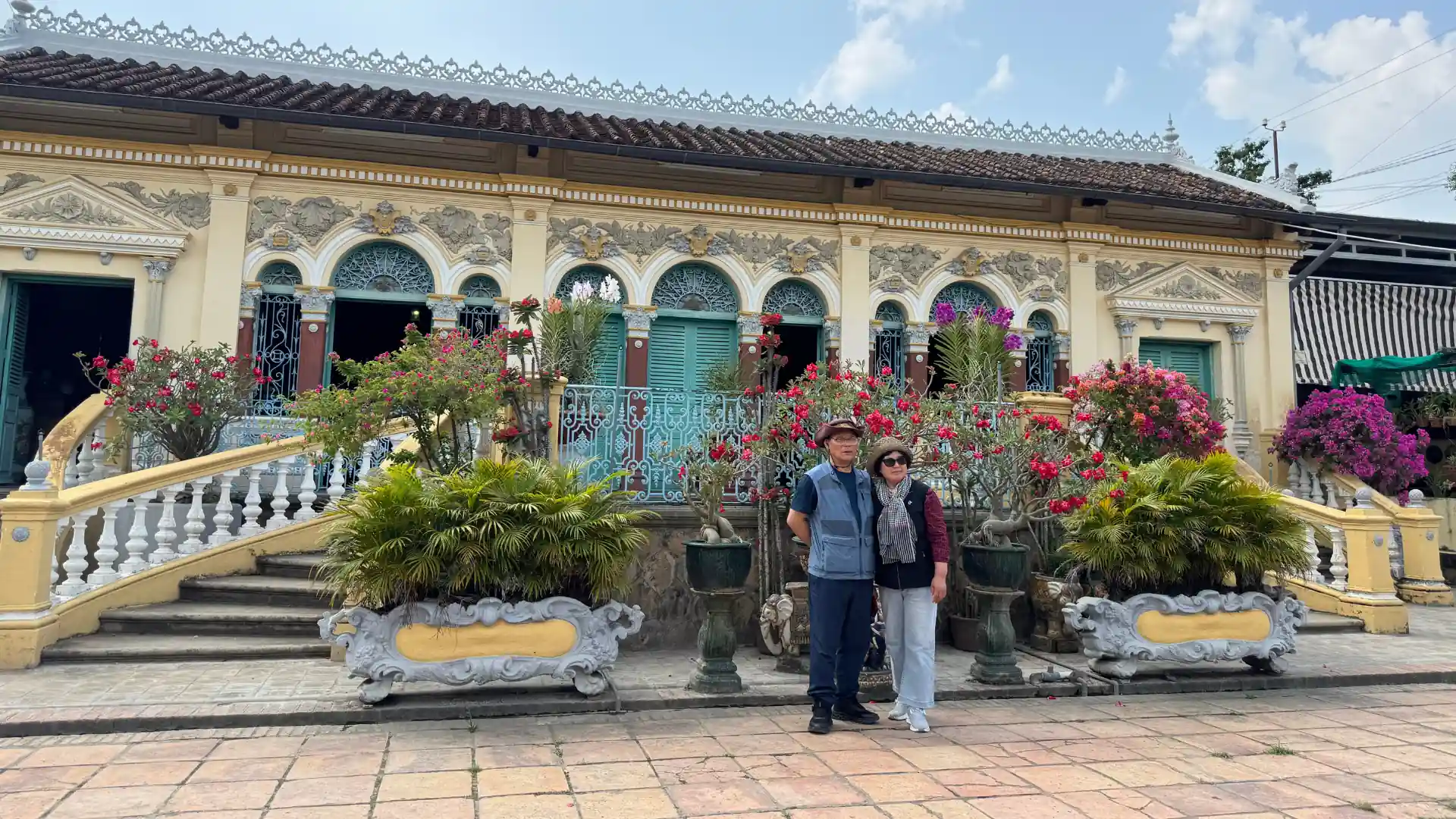
Interior Treasures: Where East Meets West
Stepping inside Binh Thuy Ancient House reveals an extraordinarily preserved collection of period furnishings, decorative arts, and family heirlooms that make this more than just architectural tourism—it’s an immersive cultural experience.
The Reception Hall serves as the home’s centerpiece, featuring an impressive collection of French and Chinese antique furniture dating from the late 19th and early 20th centuries. Ornately carved rosewood chairs and tables display both European baroque influences and traditional Vietnamese motifs. The room’s layout reflects Confucian principles of hierarchy and social order, with positioning of furniture indicating status and relationship dynamics during formal visits.
The Ancestral Altar Area occupies the most spiritually significant space in the house, embodying Vietnamese reverence for ancestors. This intricately carved wooden altar features five generations of family photographs and traditional ritual objects. The altar’s prominent placement demonstrates how even the most Westernized Vietnamese homes maintained core cultural and spiritual practices.
The Ceramic Collection represents one of the house’s most valuable assets. Displayed throughout various rooms are pieces from different periods and regional styles: blue and white ceramics from Jingdezhen (China’s historic porcelain capital), Vietnamese pottery from Bat Trang and Bien Hoa, and European porcelain acquired through colonial trade networks. These pieces weren’t merely decorative but served as displays of wealth, education, and cultural sophistication expected of elite families.
The Dining Area showcases a magnificent collection of European silverware, crystal glassware, and formal dining implements that reveal the family’s adoption of French dining customs. Yet the space also contains traditional Vietnamese serving vessels, illustrating the cultural duality that characterized wealthy Vietnamese households during colonial times.
Furniture and woodwork throughout the house demonstrate exceptional craftsmanship. Mother-of-pearl inlay work adorns tables and cabinets, creating intricate scenes of Vietnamese rural life, legendary tales, and natural motifs.
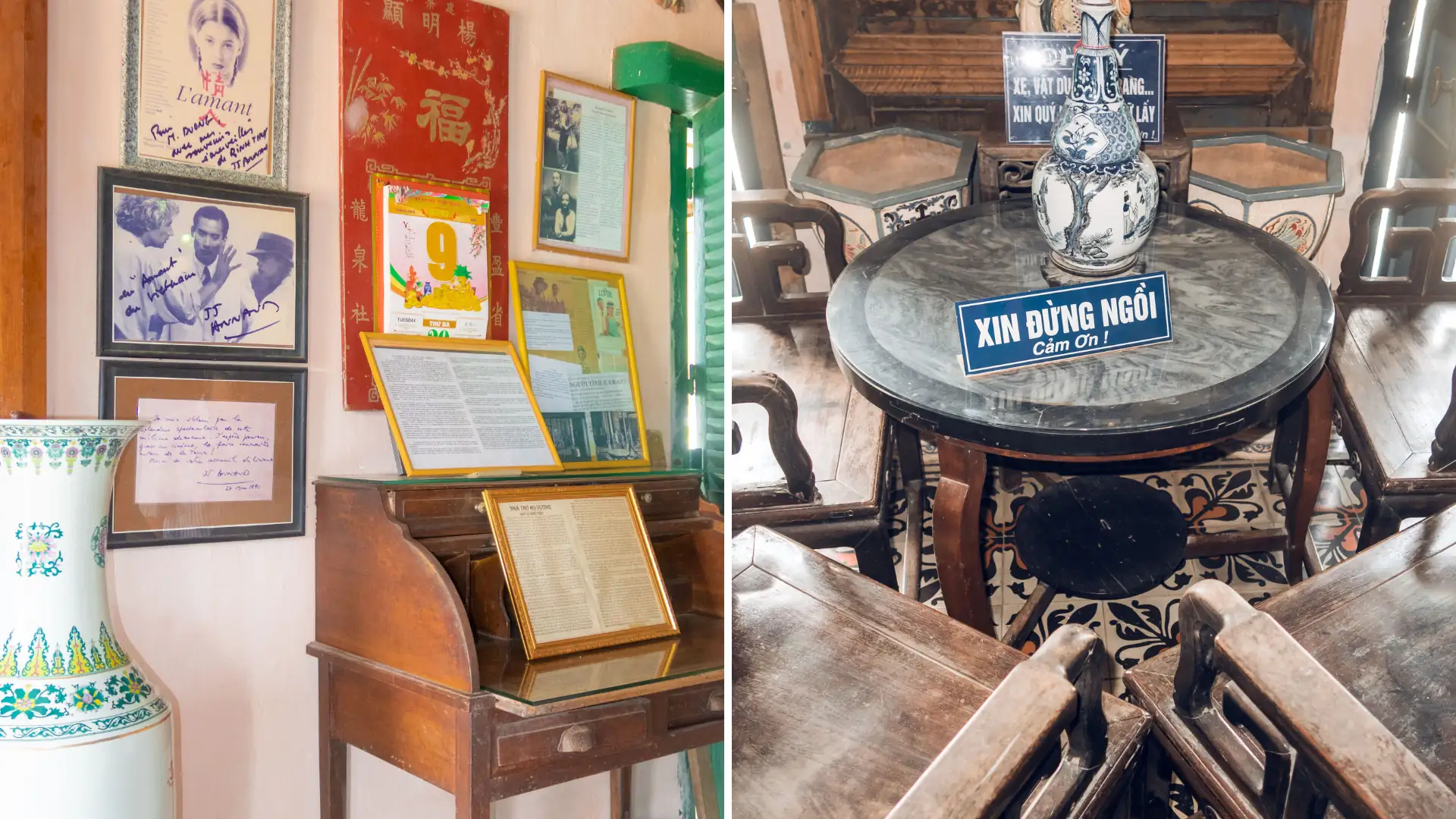
The Garden: A Tropical Sanctuary
The house’s rear garden creates a peaceful retreat featuring tropical fruit trees, ornamental plants, and traditional Vietnamese landscaping principles. The garden served both practical and aesthetic purposes: providing fruits and medicinal herbs while offering contemplative space following Buddhist and Taoist garden philosophy.
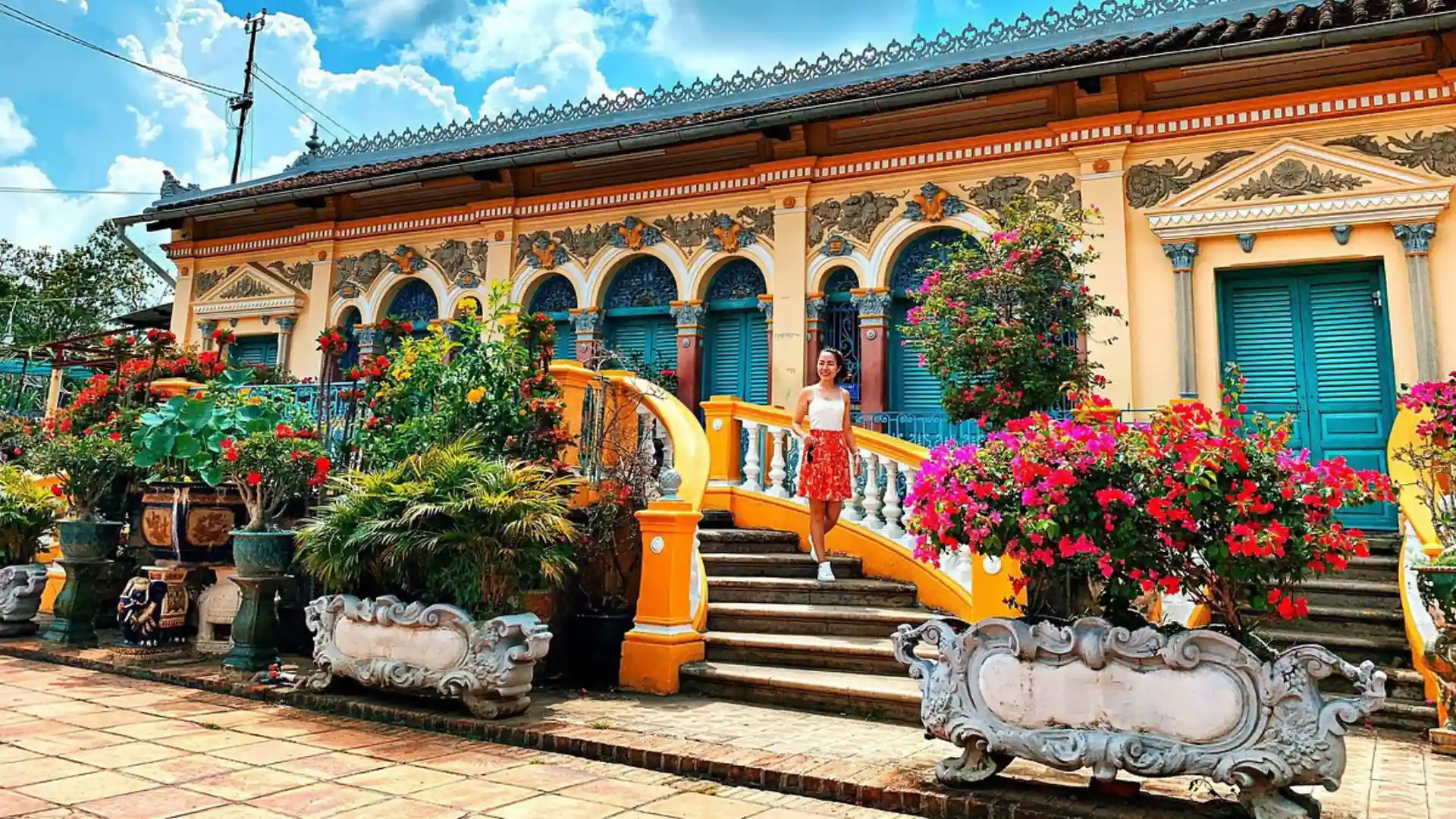
What to Experience at Binh Thuy Ancient House
Guided Tours: Bringing History to Life
While self-exploration is possible, hiring a guide (usually available on-site) dramatically enhances the experience. Knowledgeable guides, often family members or trained local historians, provide context that transforms objects into stories. They explain the significance of specific artifacts, share family anecdotes spanning generations, and illuminate the historical events that shaped both the house and the region.
Guides can explain subtle details easily missed by casual observers: why certain furniture pieces were positioned specifically, how seasonal changes affected household routines, what daily life entailed for different family members and servants, etc. This oral history component represents invaluable intangible heritage that enriches the tangible architectural experience.
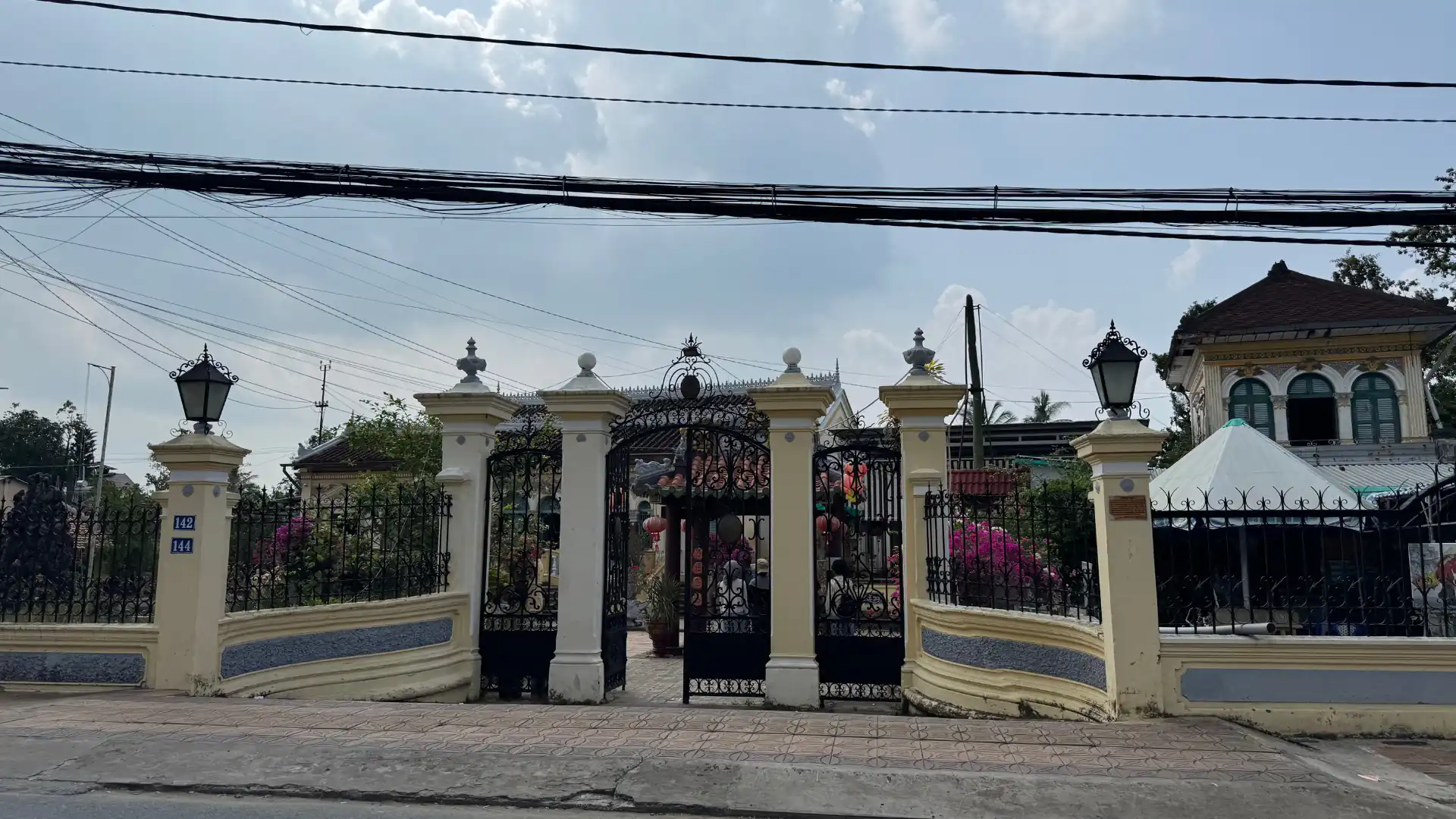
Photography Opportunities: Capturing Timeless Beauty
Binh Thuy Ancient House offers exceptional photography opportunities for both amateur and professional photographers. The interplay of natural light filtering through wooden shutters creates dramatic shadows and highlights that change throughout the day. Early morning light (7:00-9:00 AM) provides soft, warm tones ideal for interior shots, while late afternoon sun (3:00-5:00 PM) illuminates the facade beautifully.
Key photography subjects include:
- The ornate front balcony with its ironwork details
- The ancestral altar with morning incense smoke creating atmospheric effects
- Mother-of-pearl inlaid furniture catching light at angles
- The garden’s tropical vegetation frames architectural elements
- Detailed shots of ceramic collections and carved wooden panels
Photography tip: Always ask permission before photographing family members or staff. Respect any restricted areas, and avoid using flash photography on delicate antiques and textiles.
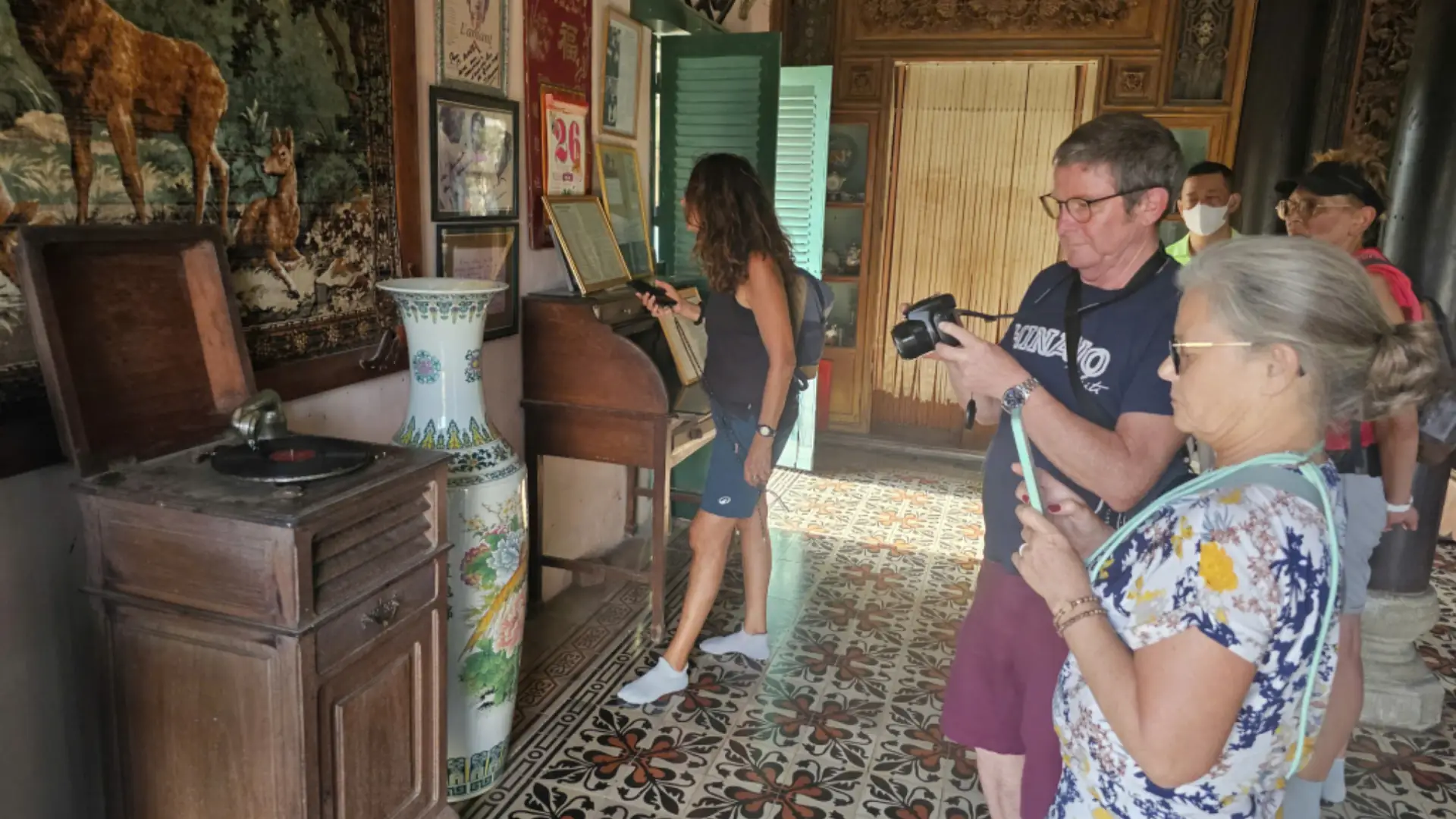
Cultural Immersion: Understanding Vietnamese Heritage
Beyond visual splendor, Binh Thuy Ancient House provides insights into Vietnamese cultural values and social systems. Observing how spaces were organized reveals Confucian concepts of hierarchy, the central importance of ancestor veneration in Vietnamese spirituality, the role of education and scholarship, and how wealthy families balanced tradition with modernity.
The house illustrates the complexity of Vietnam’s colonial period—neither simply oppressive domination nor willing adoption, but rather a complicated negotiation where Vietnamese elites selectively incorporated foreign elements while maintaining core cultural identity. This nuanced understanding challenges simplified historical narratives and demonstrates cultural resilience and adaptation.

Practical Visitor Information at Binh Thuy Ancient House
Location and Access
Binh Thuy Ancient House is located at 144 Bui Huu Nghia Street (formerly Dong Ho Street), Binh Thuy Ward, Binh Thuy District, Can Tho City. The site sits approximately 7 kilometers southwest of Can Tho city center, requiring about 15-20 minutes by taxi or motorbike.
Getting There:
- By taxi/Grab: Most convenient option, costing 70,000-100,000 VND from central Can Tho
- By motorbike taxi (xe ôm): More economical at 40,000-60,000 VND
- By motorbike rental: Daily rentals available in Can Tho (100,000-150,000 VND/day)
- By bicycle: Possible for adventurous travelers comfortable with Vietnamese traffic
- By tour: When attending Can Tho city tours, you can include Binh Thuy Ancient House as a stop
Operating Hours and Entrance Fees
Hours: Daily from 8:00 AM to 5:00 PM (last entry 4:30 PM)
Entrance fee: Approximately 10,000-20,000 VND per person (subject to change)
Guide services: Optional, typically 50,000-100,000 VND for groups
Note: As a family residence, the house may occasionally close for private family events. Calling ahead ensures accessibility, particularly during major Vietnamese holidays (Tet, ancestral remembrance days).
Best Times to Visit
Optimal visiting times:
- Time of day: Early morning (8:00-10:00 AM) offers cooler temperatures and softer light, with fewer tour groups
- Season: November through February provides the most comfortable weather during the Mekong Delta’s dry season
- Weekdays vs. weekends: Weekdays generally see fewer visitors, allowing for more intimate exploration
Avoid: Midday visits (11:00 AM-2:00 PM) during the hot season when tropical heat makes extended visits uncomfortable.
What to Bring and Wear
- Comfortable walking shoes: You’ll remove shoes before entering certain areas
- Respectful clothing: While not a religious site, modest dress (covered shoulders and knees) shows cultural respect
- Sun protection: Hat and sunscreen for garden areas
- Water: Stay hydrated, especially during the hot season
- Camera: With fully charged batteries and memory cards
- Cash: For entrance fees and optional guide tips (card payments may not be available)
Visitor Etiquette
As a private home with family members still residing on the property:
- Speak quietly and respectfully
- Ask permission before touching antiques or furniture
- Follow the guide instructions about restricted areas
- Remove shoes when entering certain rooms
- Avoid pointing feet toward altars or sacred objects
- Turn off phone ringers
- Supervise children carefully around valuable antiques
Combining Your Visit: Nearby Attractions
Binh Thuy Ancient House works excellently as part of a broader Can Tho itinerary:
Can Tho Museum (3 km): Provides a broader context about Mekong Delta history, culture, and ecology
Ninh Kieu Wharf (7 km): Can Tho’s riverfront promenade is perfect for evening strolls and dining
Cai Rang Floating Market (6 km): The Mekong’s largest floating market requires early morning visits (5:00-8:00 AM).
Bang Lang Stork Sanctuary (50 km): Ornithology enthusiasts can observe thousands of storks roosting
My Khanh Tourist Village (4 km): Experience rural Mekong Delta life, fruit orchards, and traditional crafts
A well-planned day might include: Early morning Cai Rang Floating Market visit → Mid-morning Binh Thuy Ancient House tour → Lunch at Can Tho city center → Afternoon Can Tho Museum → Evening at Ninh Kieu Wharf.
Book your authentic Can Tho Tour with your Local Expert Tour Guide
Get your Own Advisor and Book Your Authentic Mekong Delta Tour
Get your free personalized Mekong itinerary - Leave your info and our local expert will respond within 5 minutes to help you design your most authentic trip:
Frequently Asked Questions (FAQs)
How long should I spend at Binh Thuy Ancient House?
Allow 45 minutes to 1.5 hours depending on your interest level. Casual visitors typically spend 45 minutes, while photography enthusiasts and history buffs may spend longer.
Is the Binh Thuy Ancient House suitable for children?
Yes, but supervise carefully around valuable antiques. The garden provides space for restless children. Educational materials explaining architecture and history in child-friendly terms are generally not available, so parents should provide context.
Can I buy souvenirs at Binh Thuy Ancient House?
Limited souvenirs may be available, but this isn’t a commercial tourist attraction. Instead, support the site by hiring guides and respecting the property.
Is photography allowed at Binh Thuy Ancient House?
Yes, generally throughout public areas. Flash photography of delicate antiques should be avoided. Always ask permission before photographing people.
How does Binh Thuy Ancient House compare to other heritage houses?
It rivals Huynh Thuy Le Ancient House in Sa Dec and offers better preservation than many similar properties. The advantage here is authentic family inhabitation creating genuine atmosphere rather than staged museum settings.
Can I stay overnight at Binh Thuy Ancient House?
No, this remains a private family residence. However, Can Tho offers numerous accommodation options from budget hostels to luxury hotels.
What if I don’t speak Vietnamese at Binh Thuy Ancient House?
Basic English-speaking guides are usually available. Bringing translation apps helps, though the visual experience transcends language barriers.
Is the Binh Thuy Ancient House wheelchair accessible?
Unfortunately, no. The historic structure has stairs and uneven surfaces that present accessibility challenges. Ground floor areas may be partially accessible with assistance.



